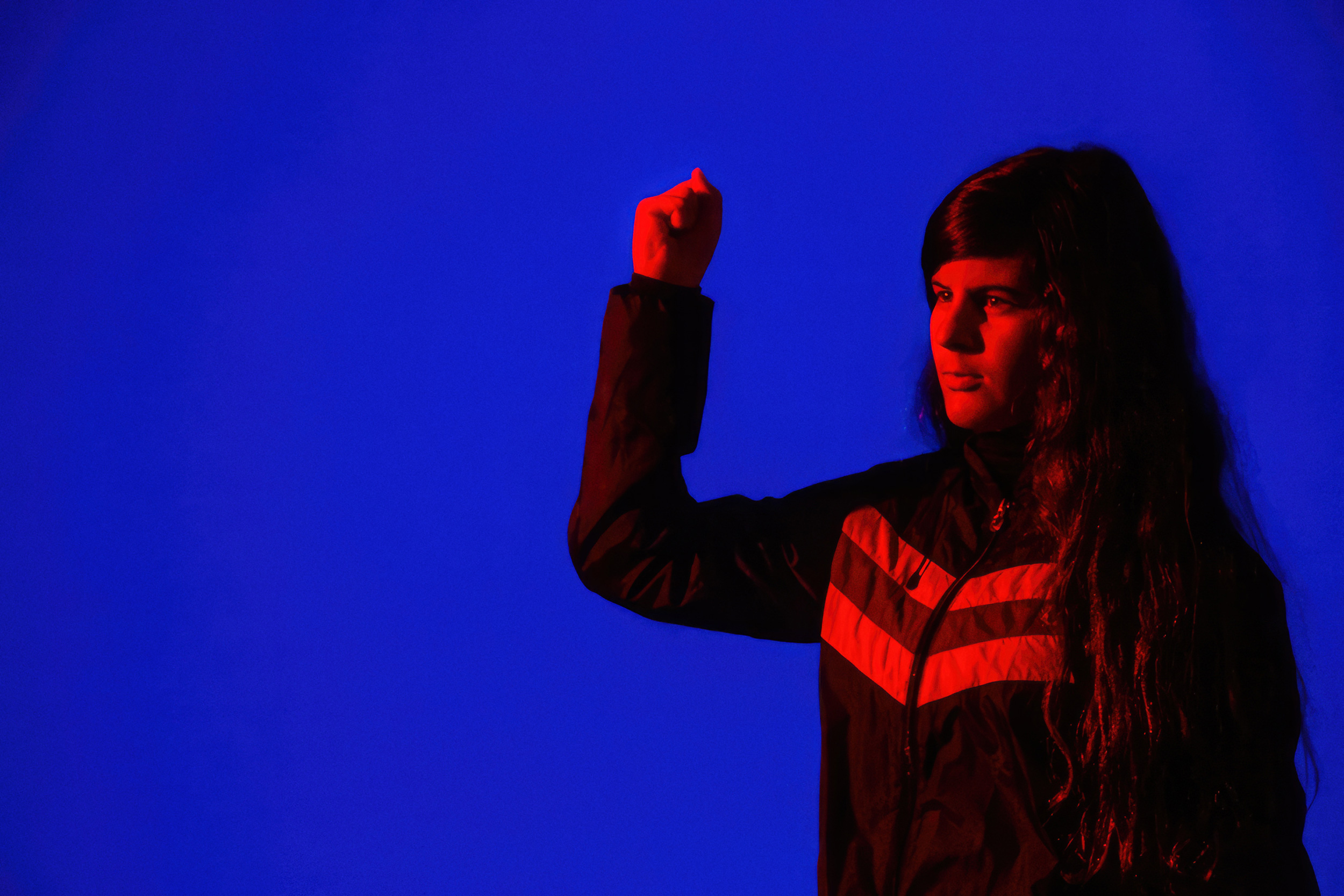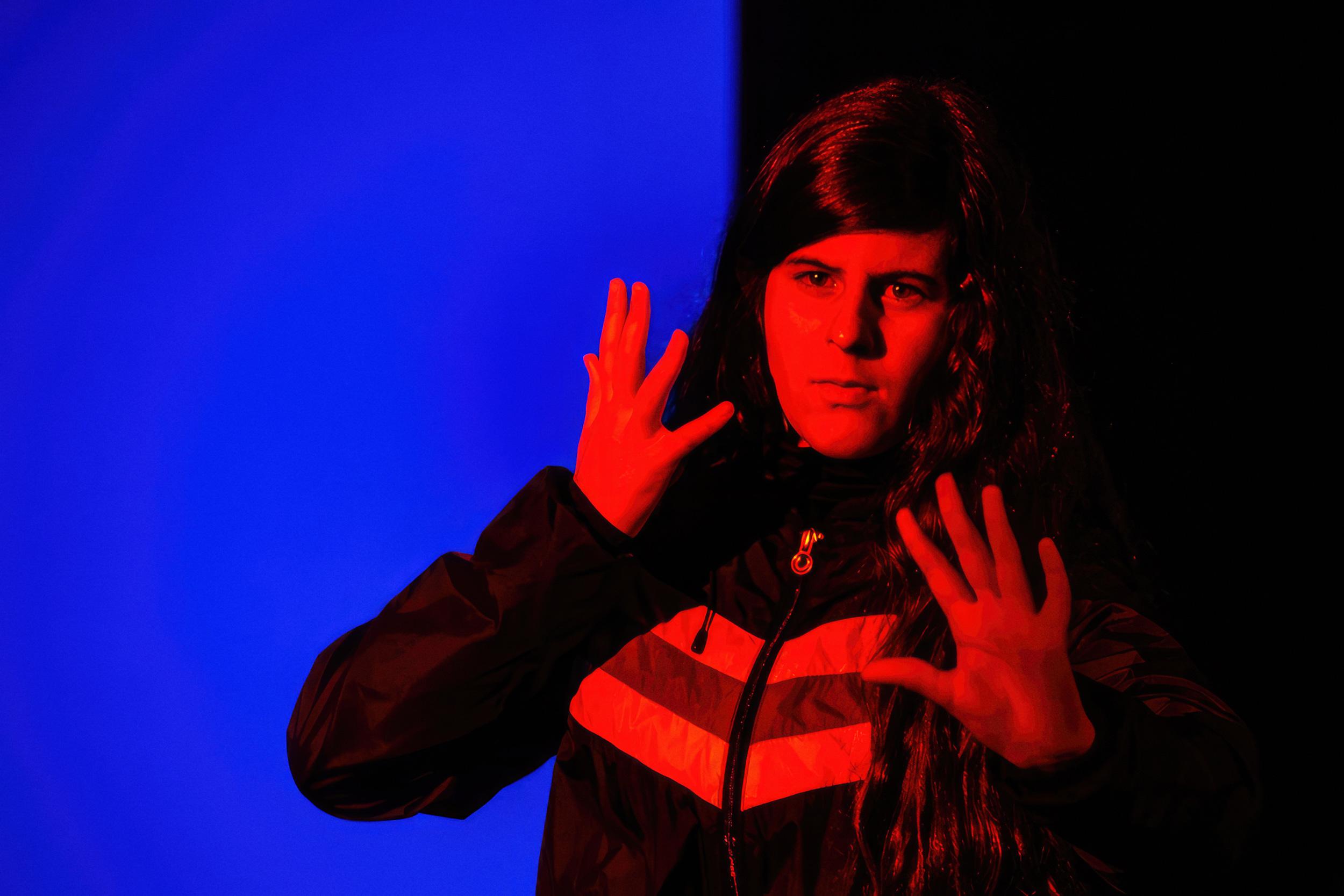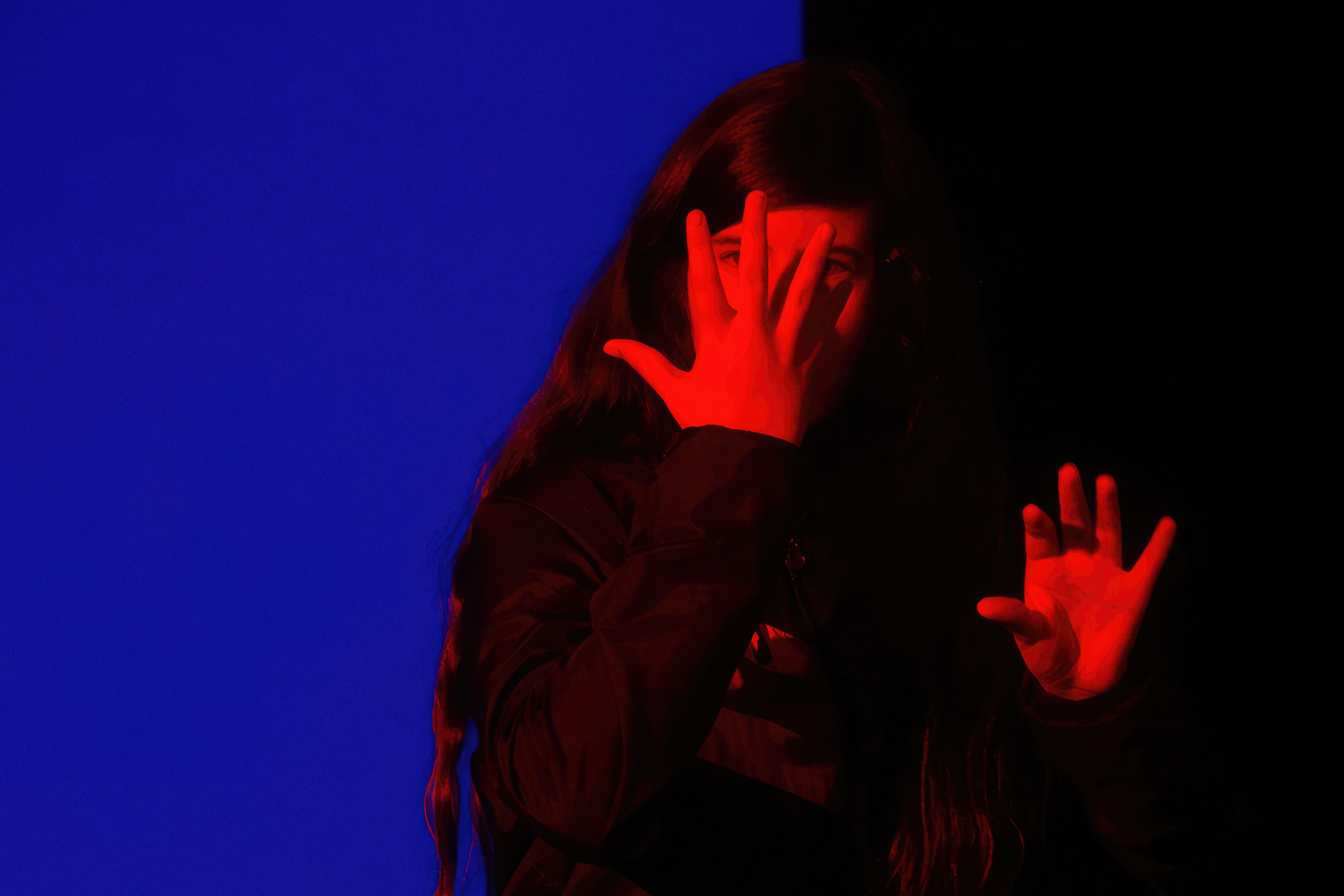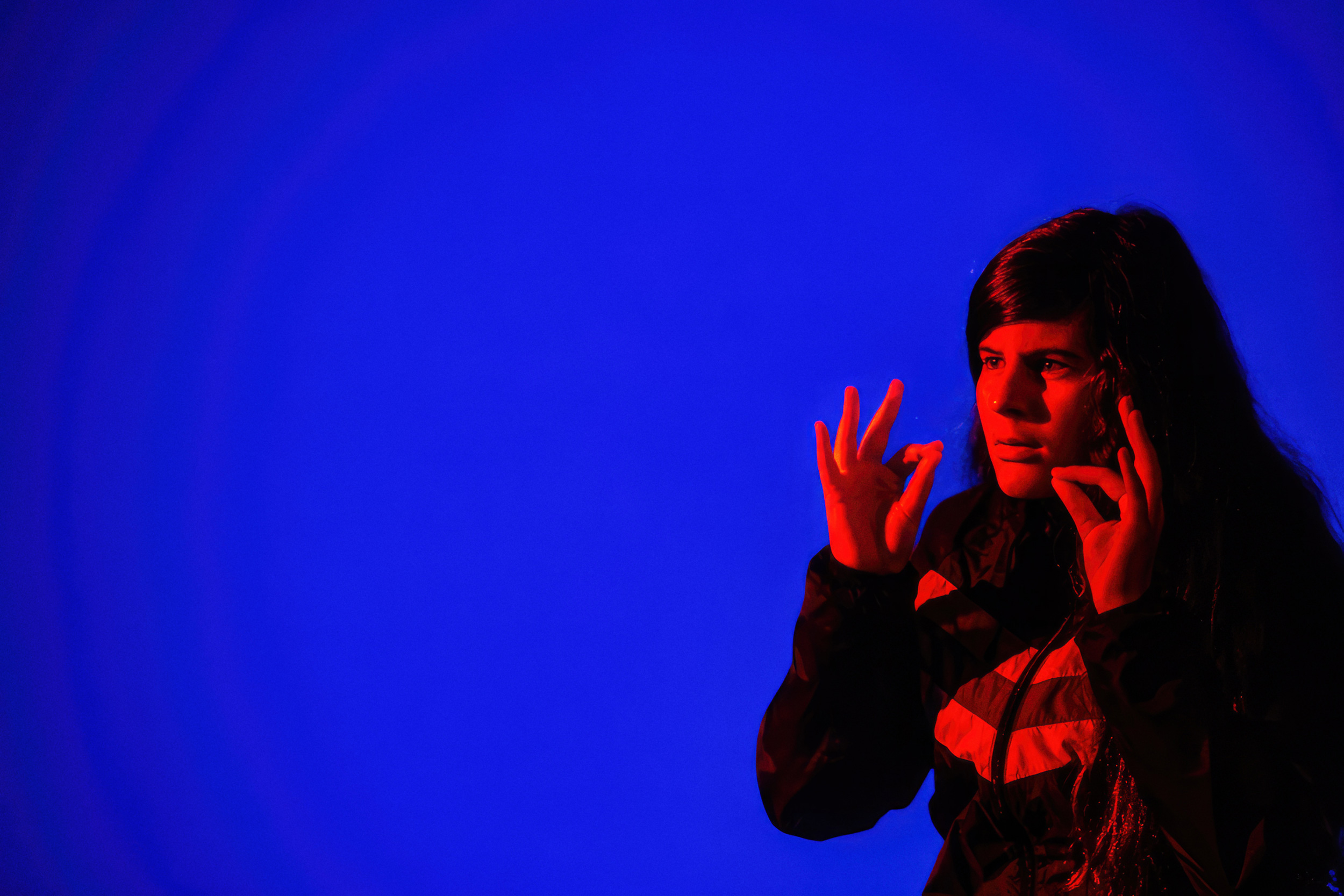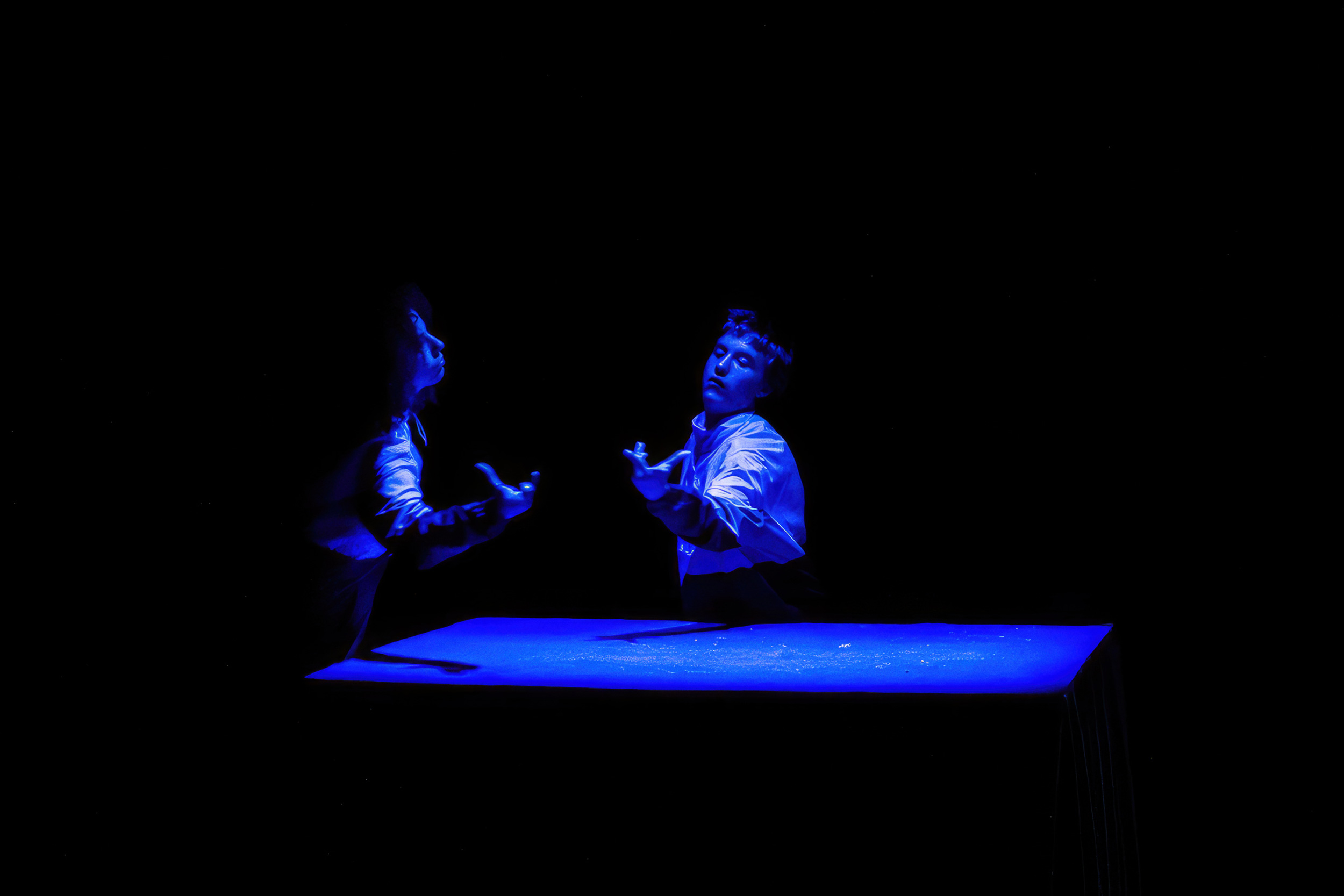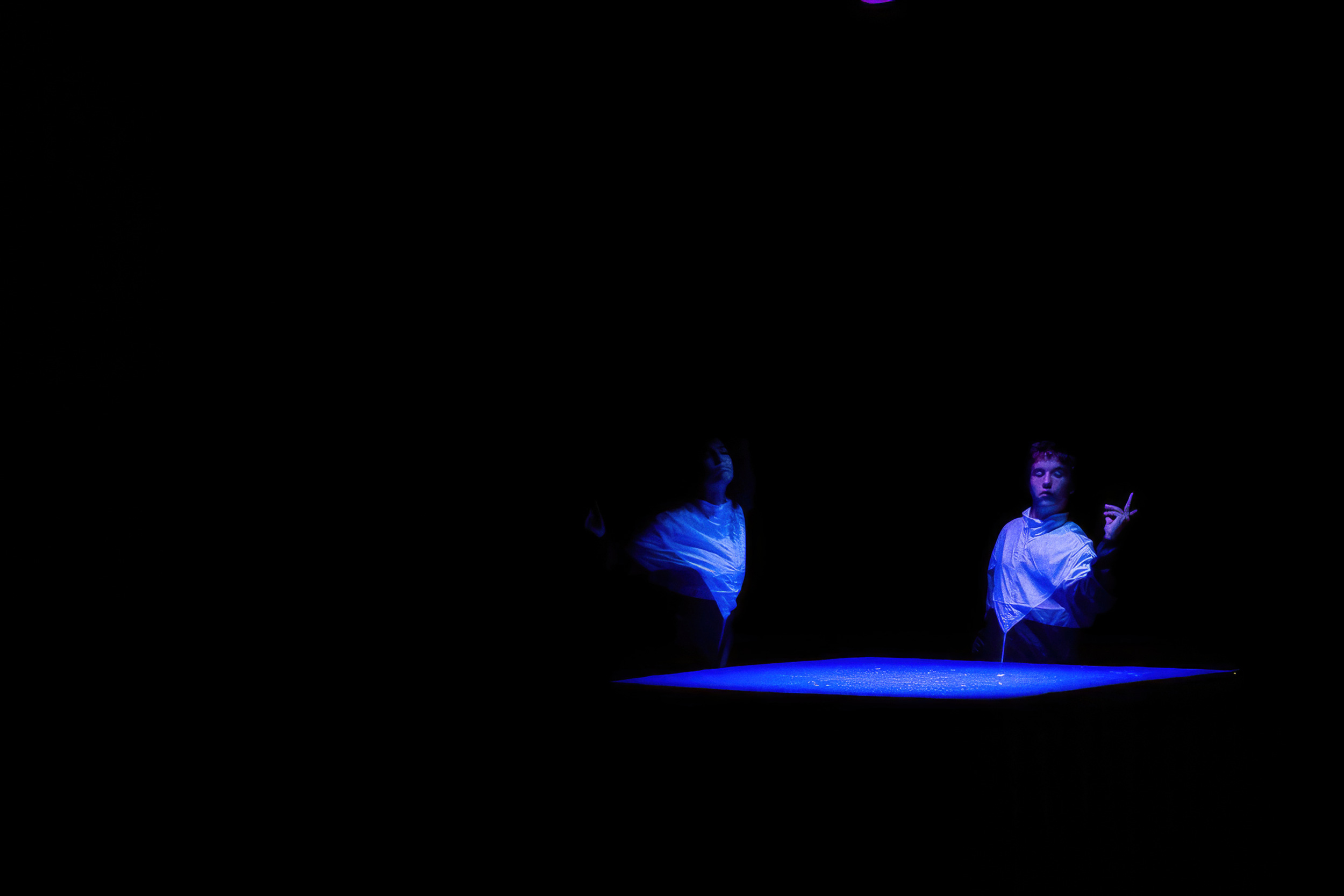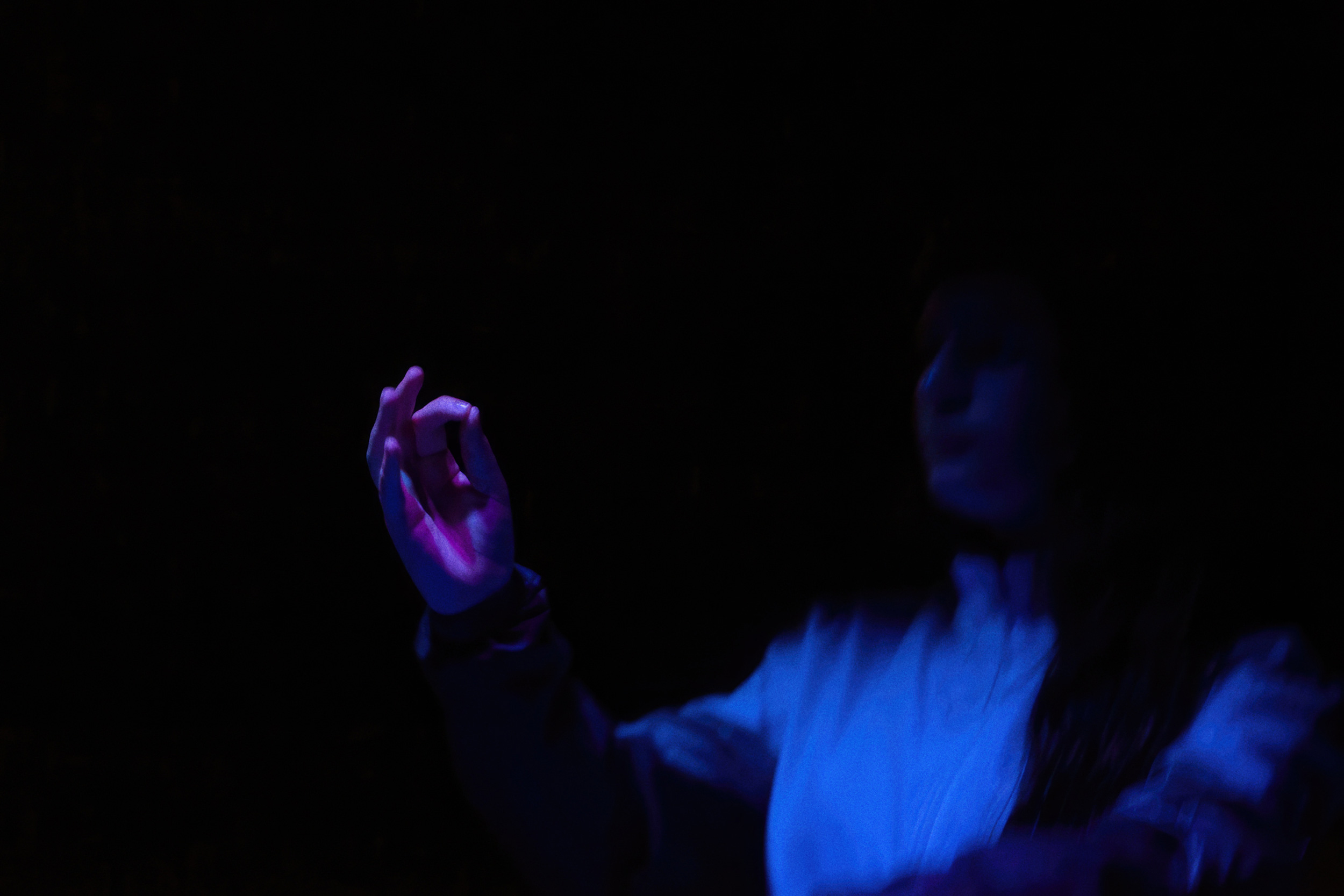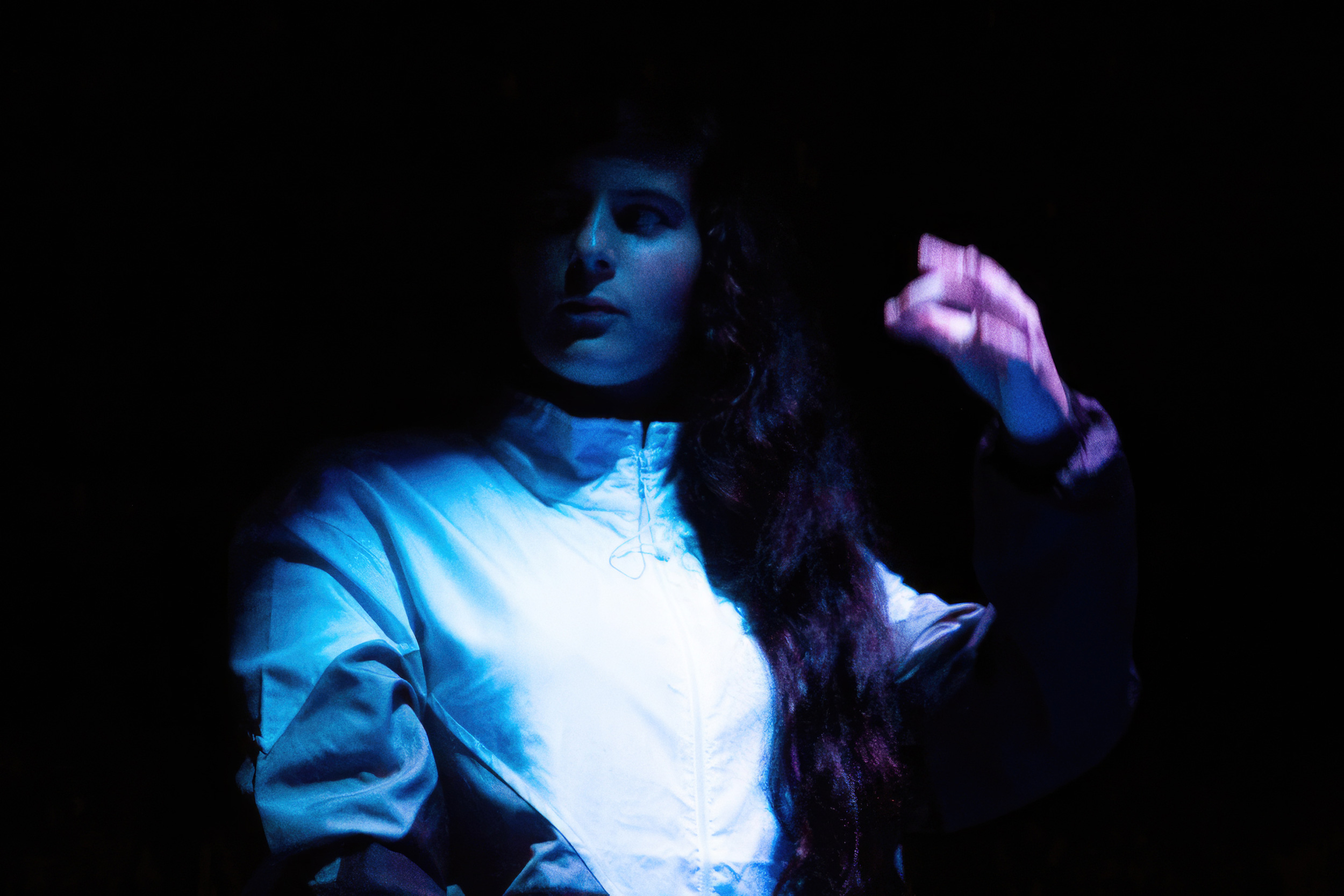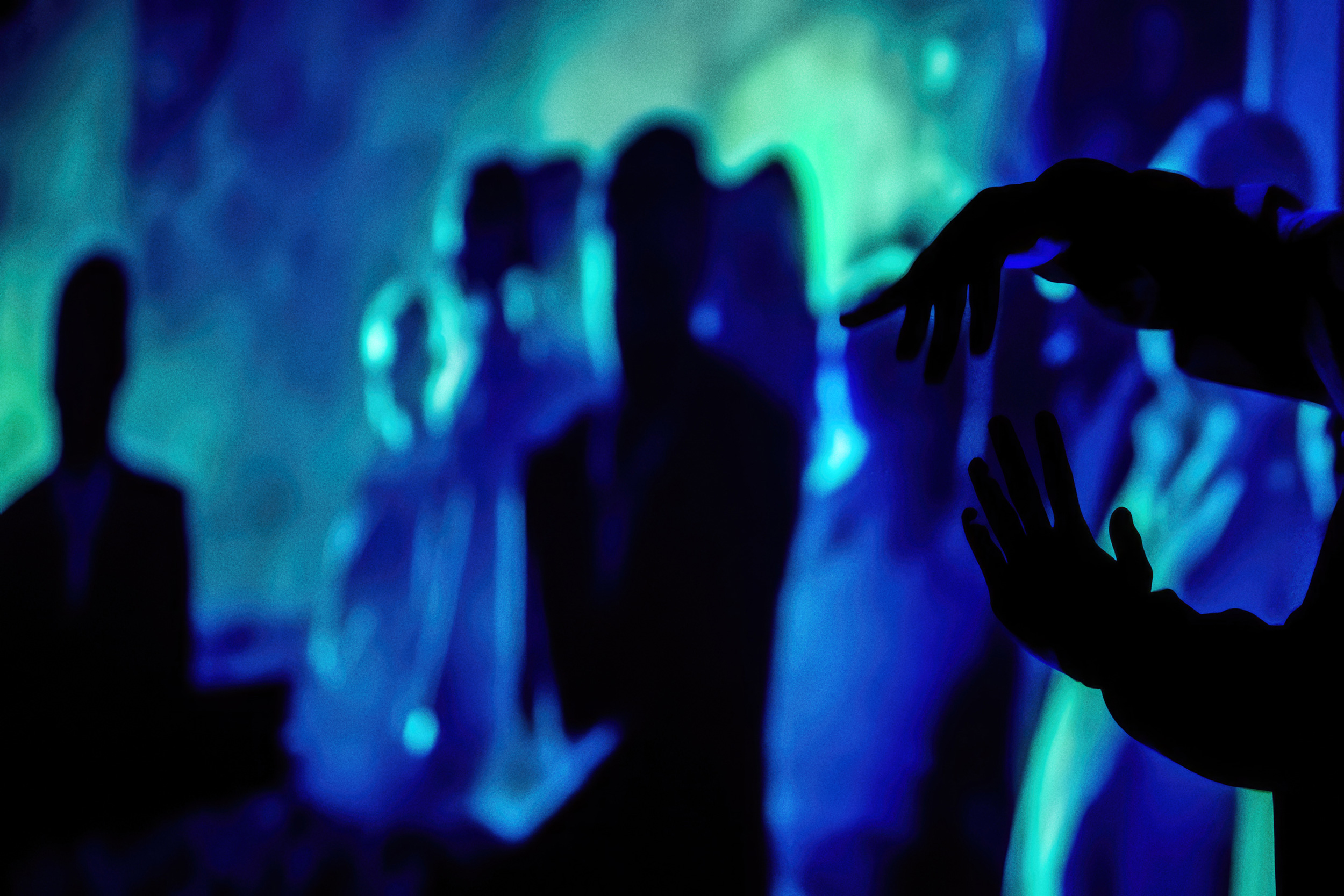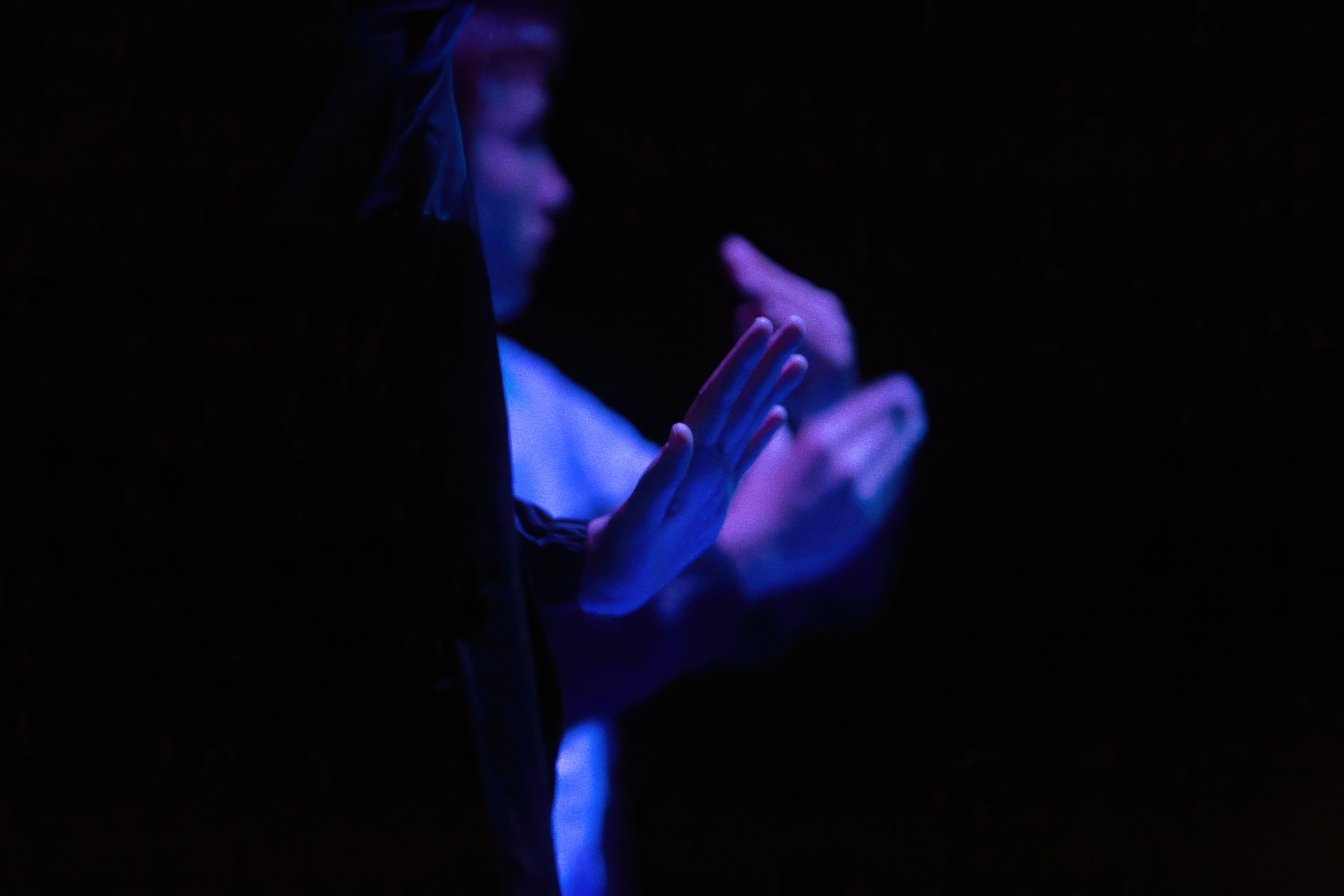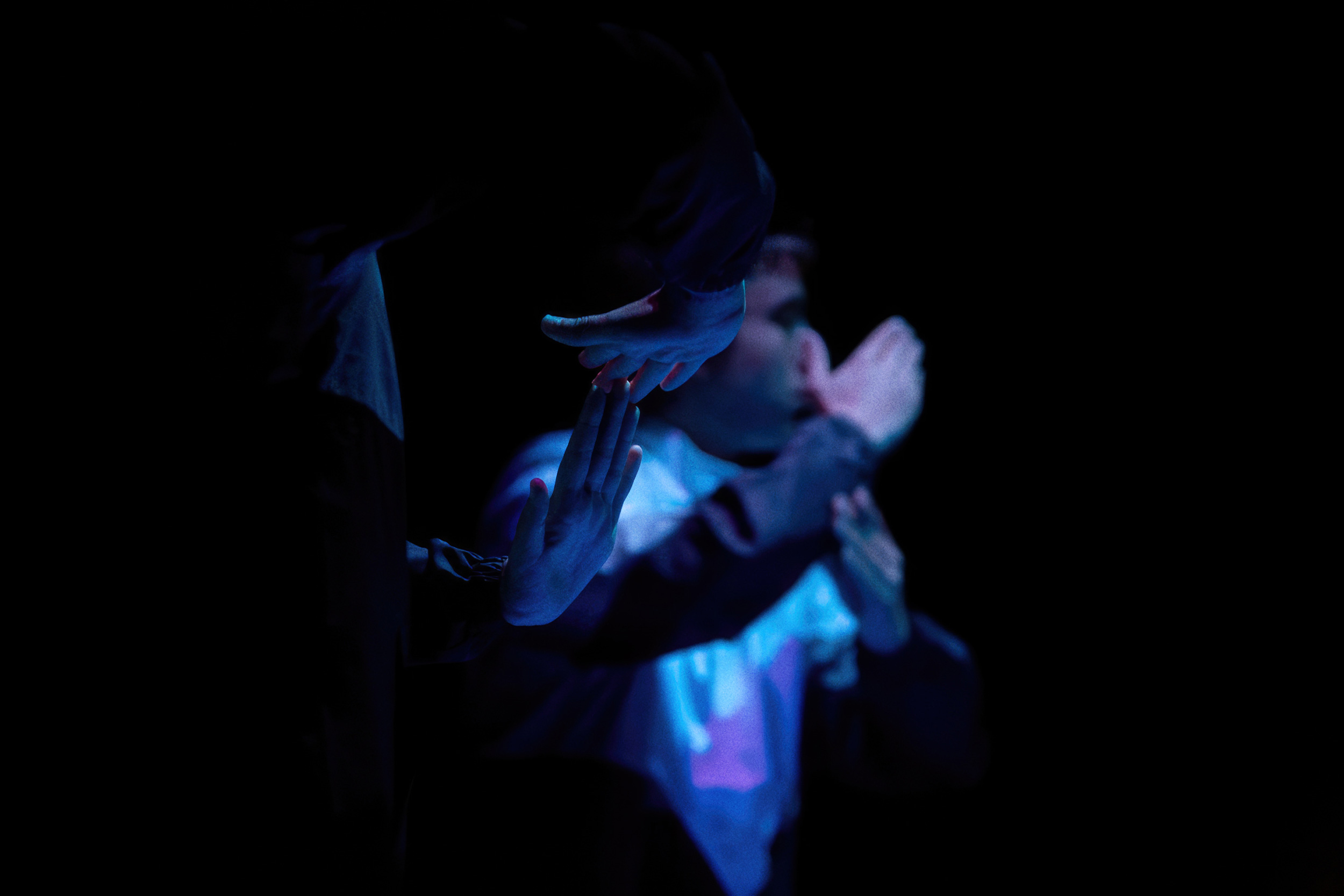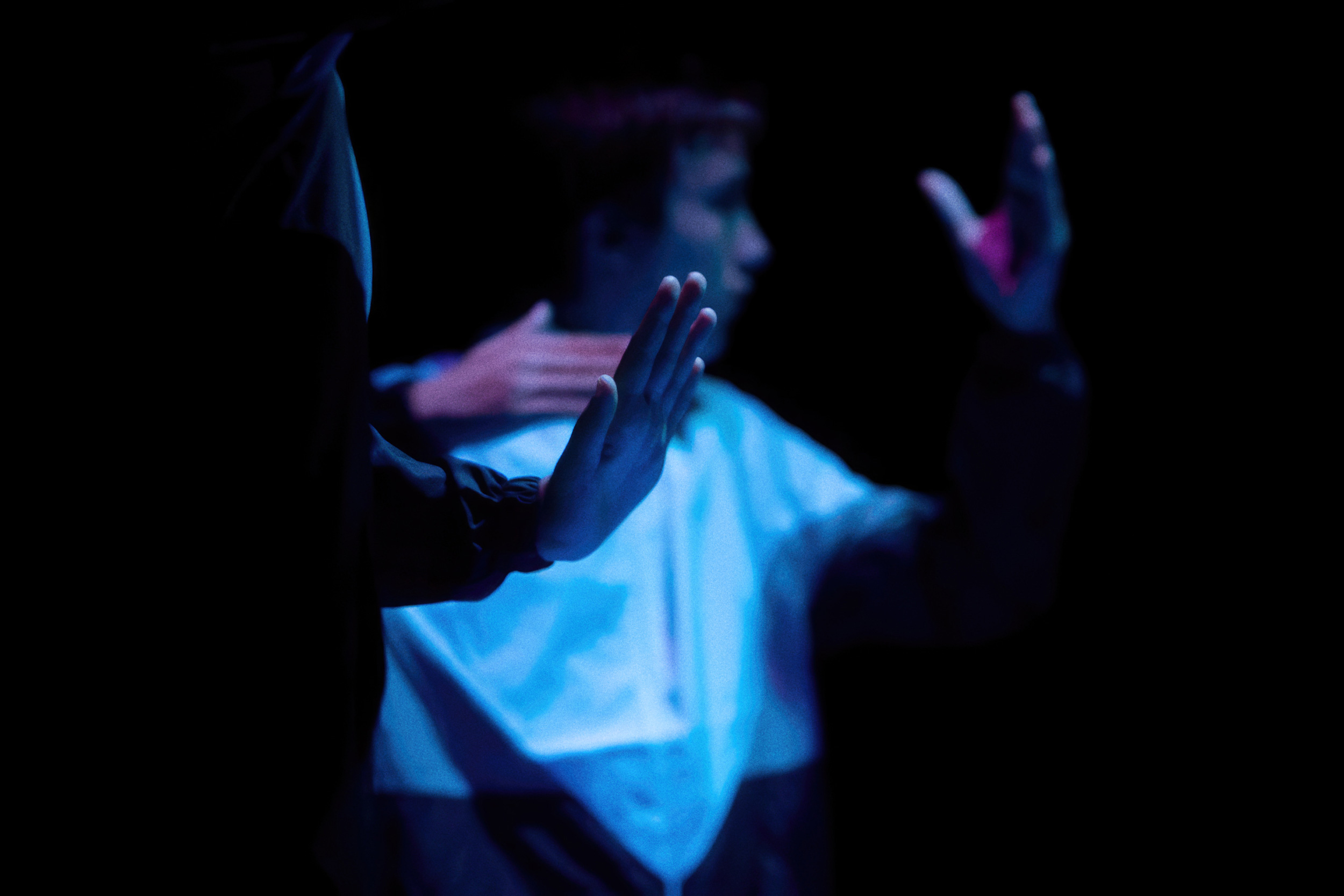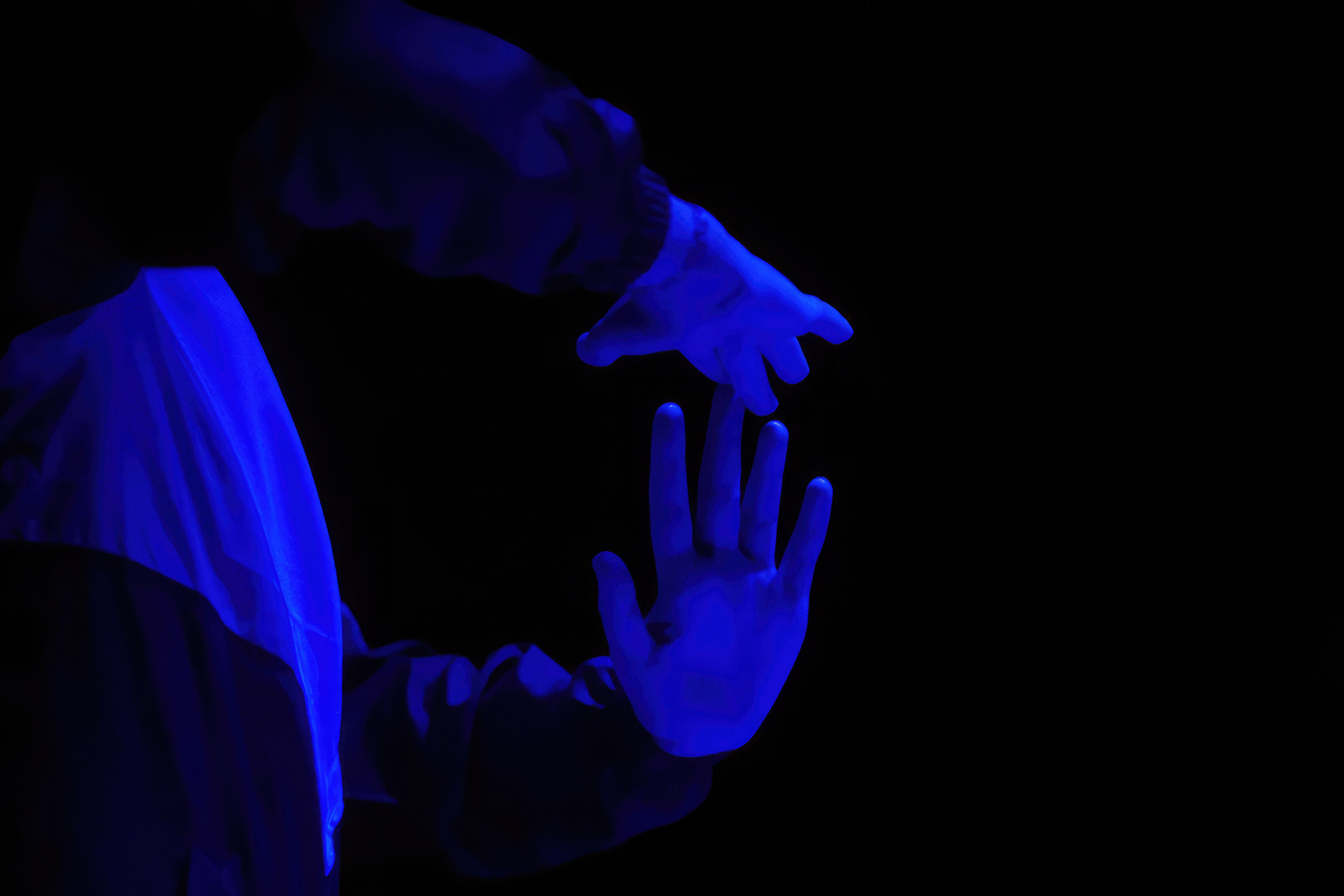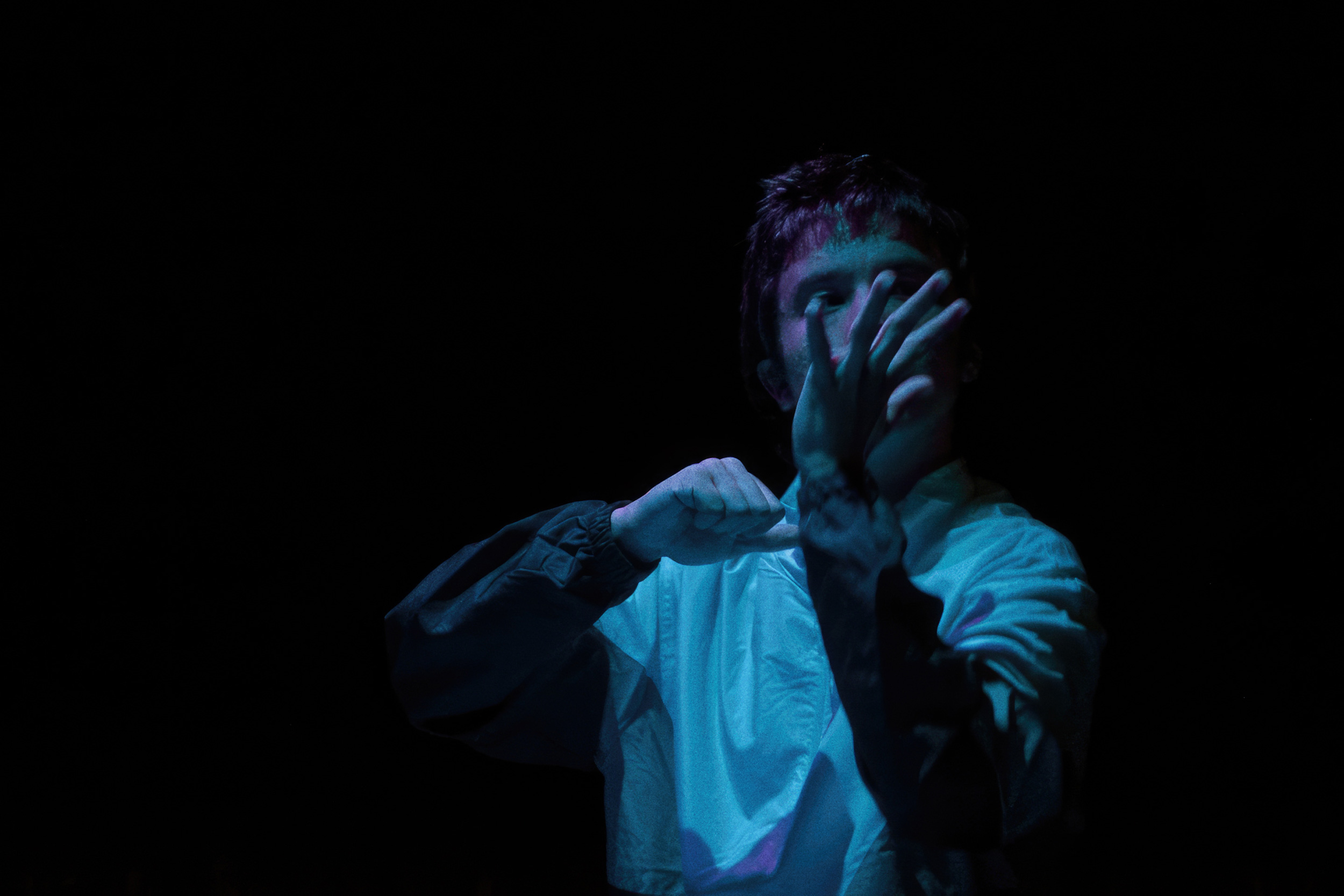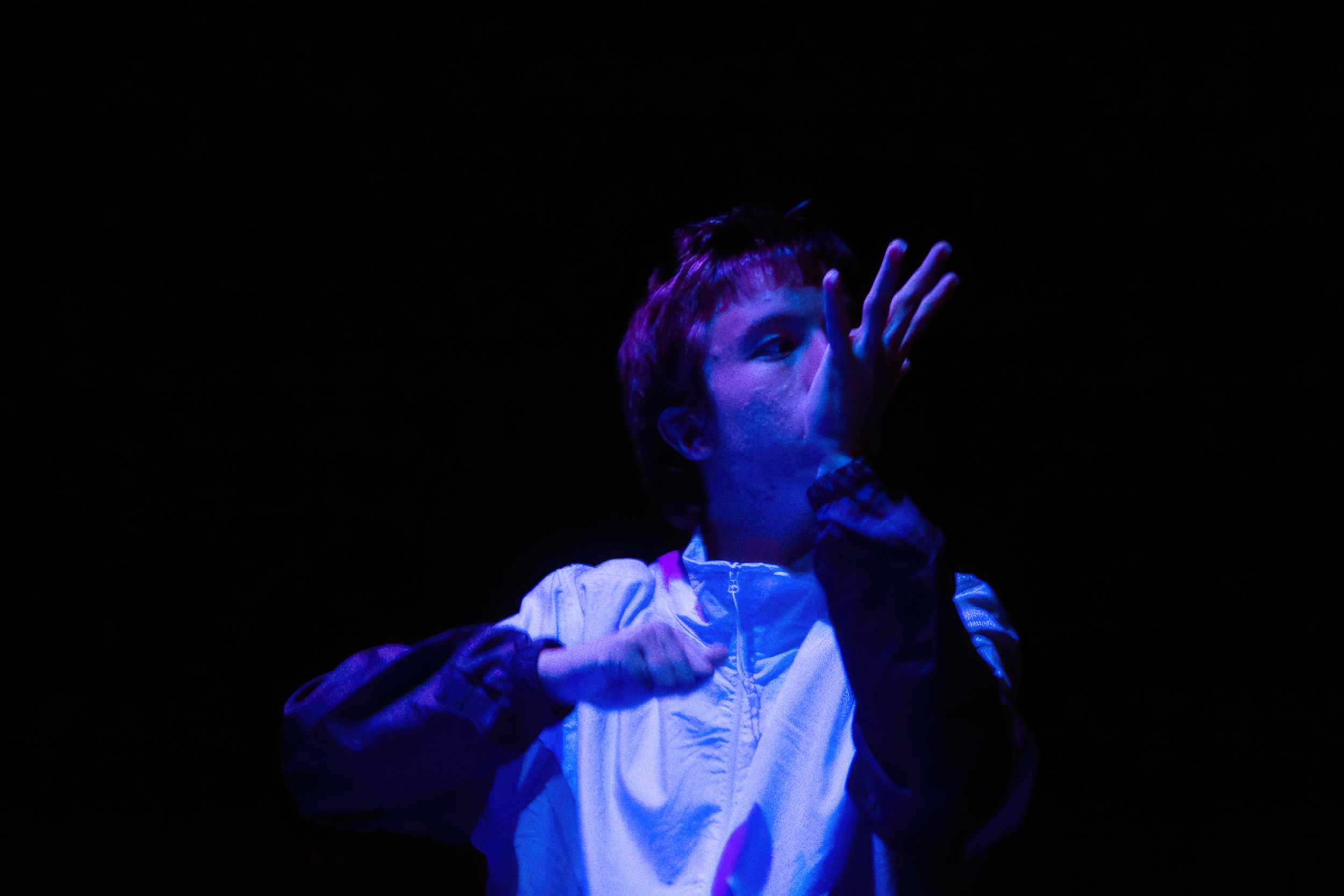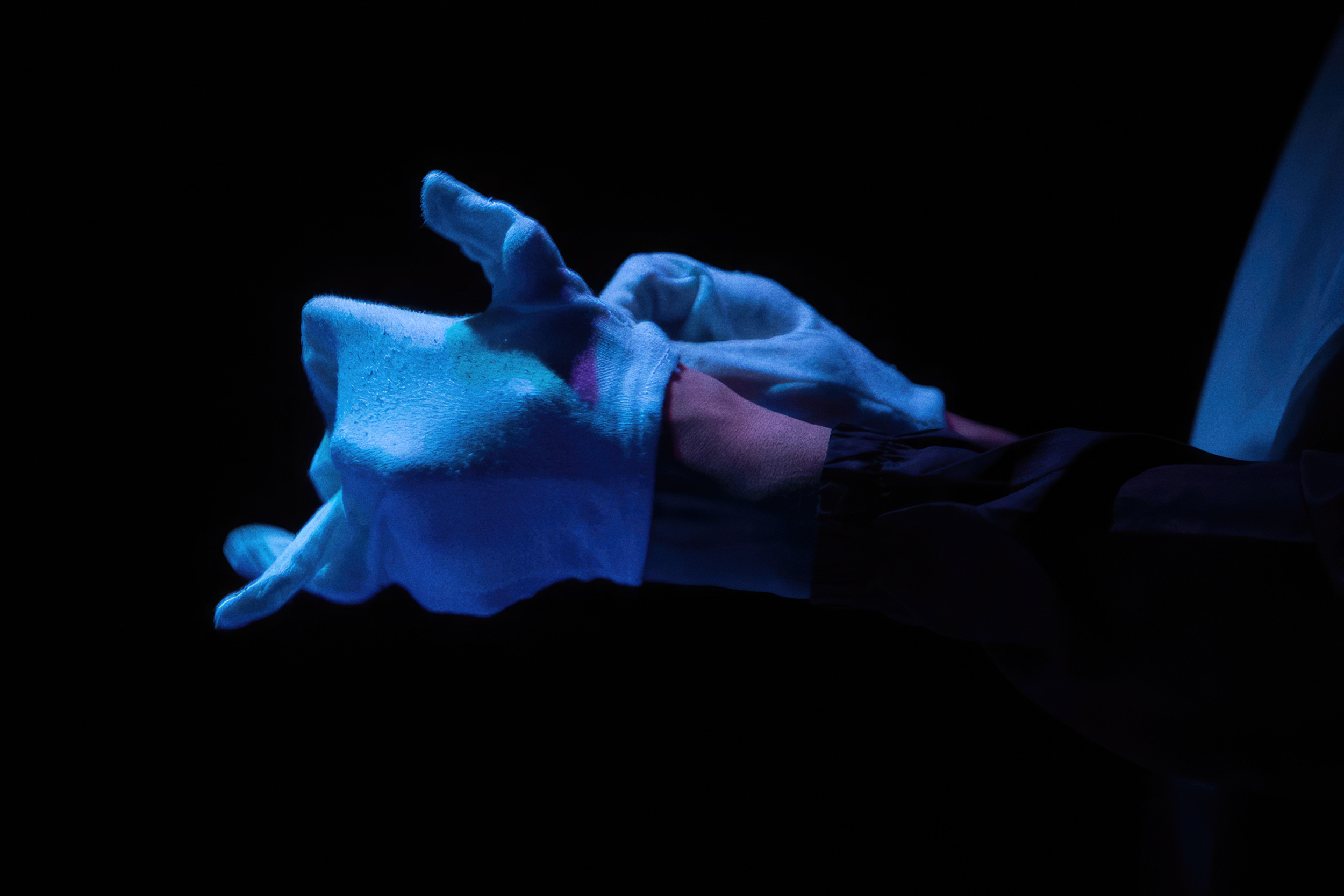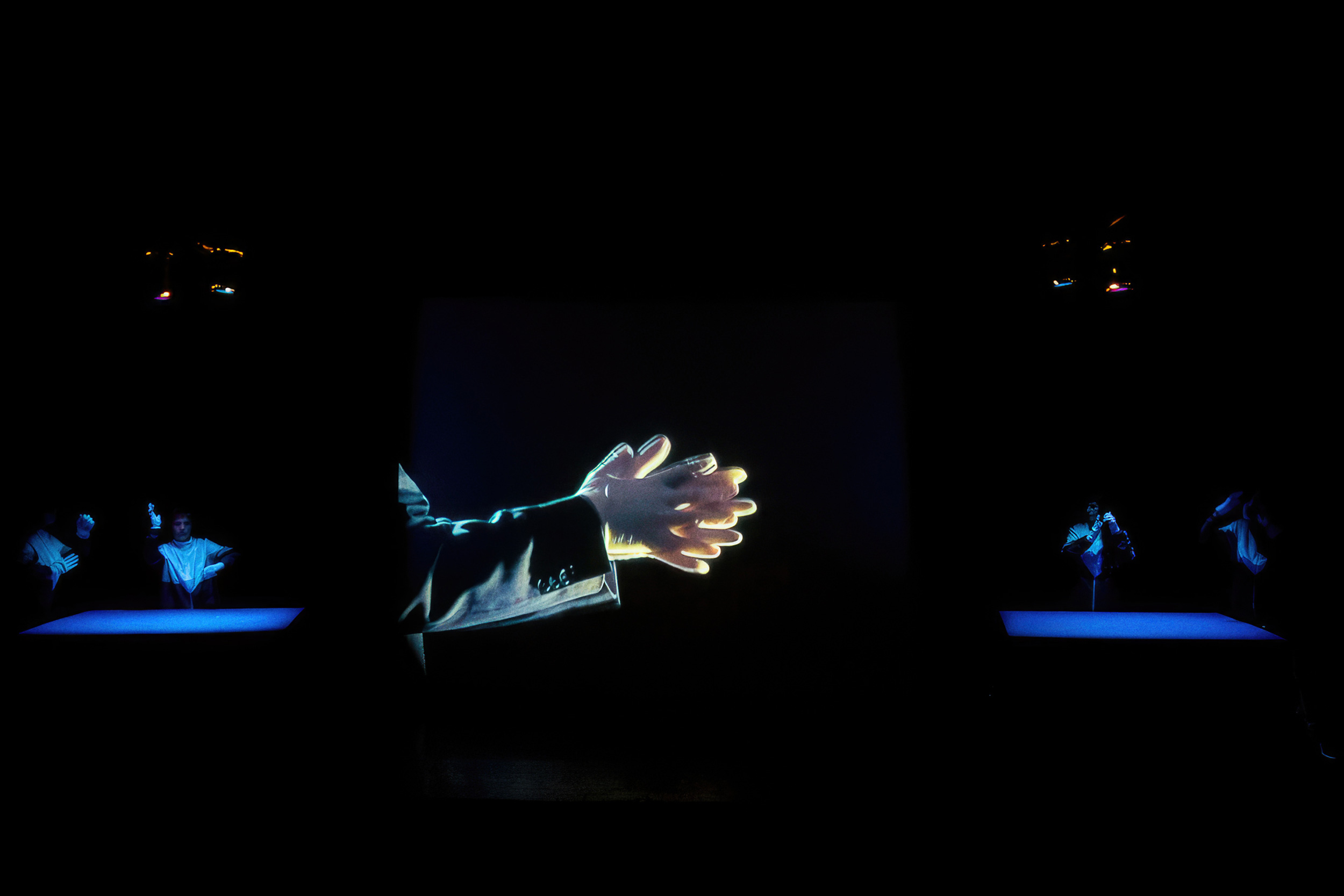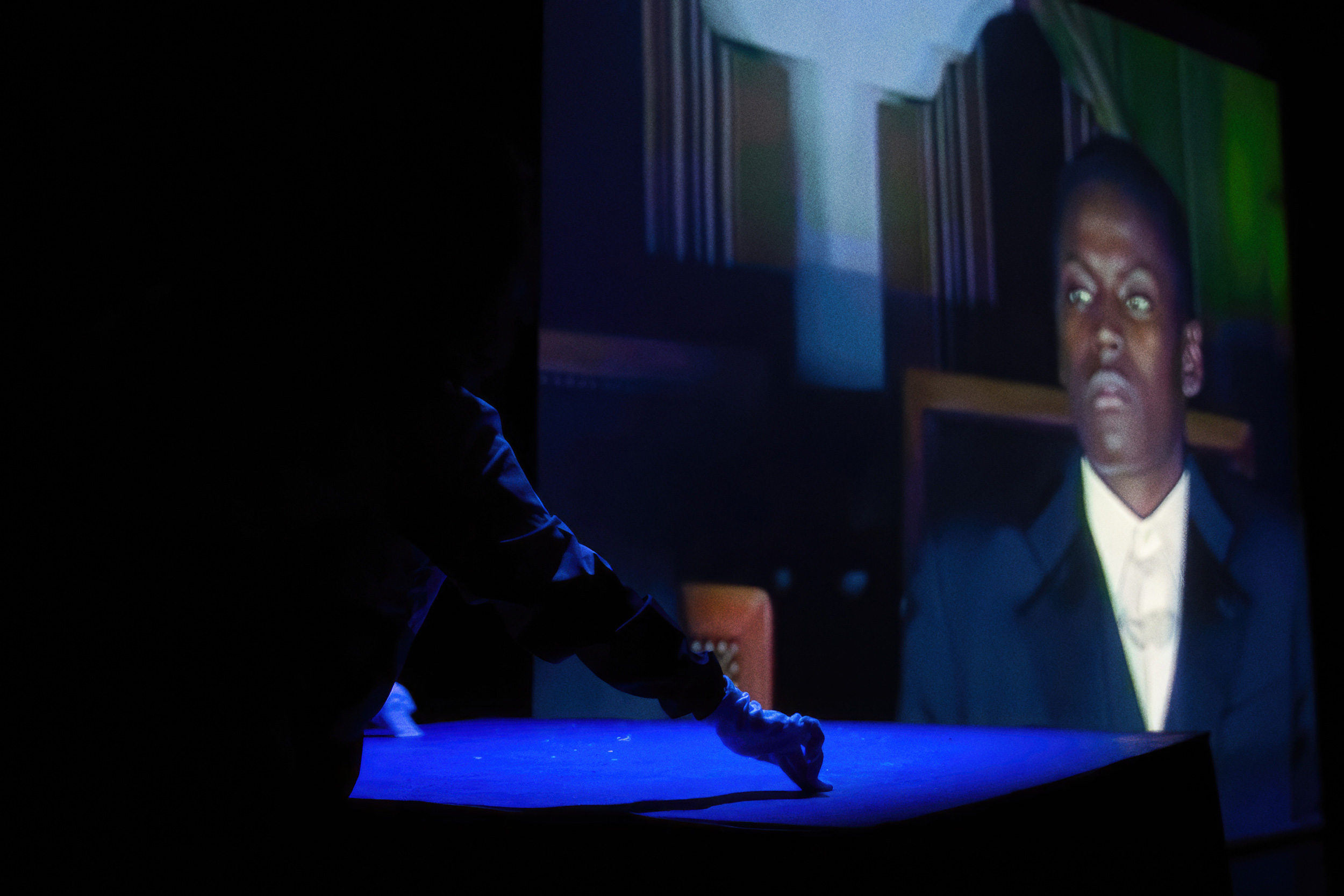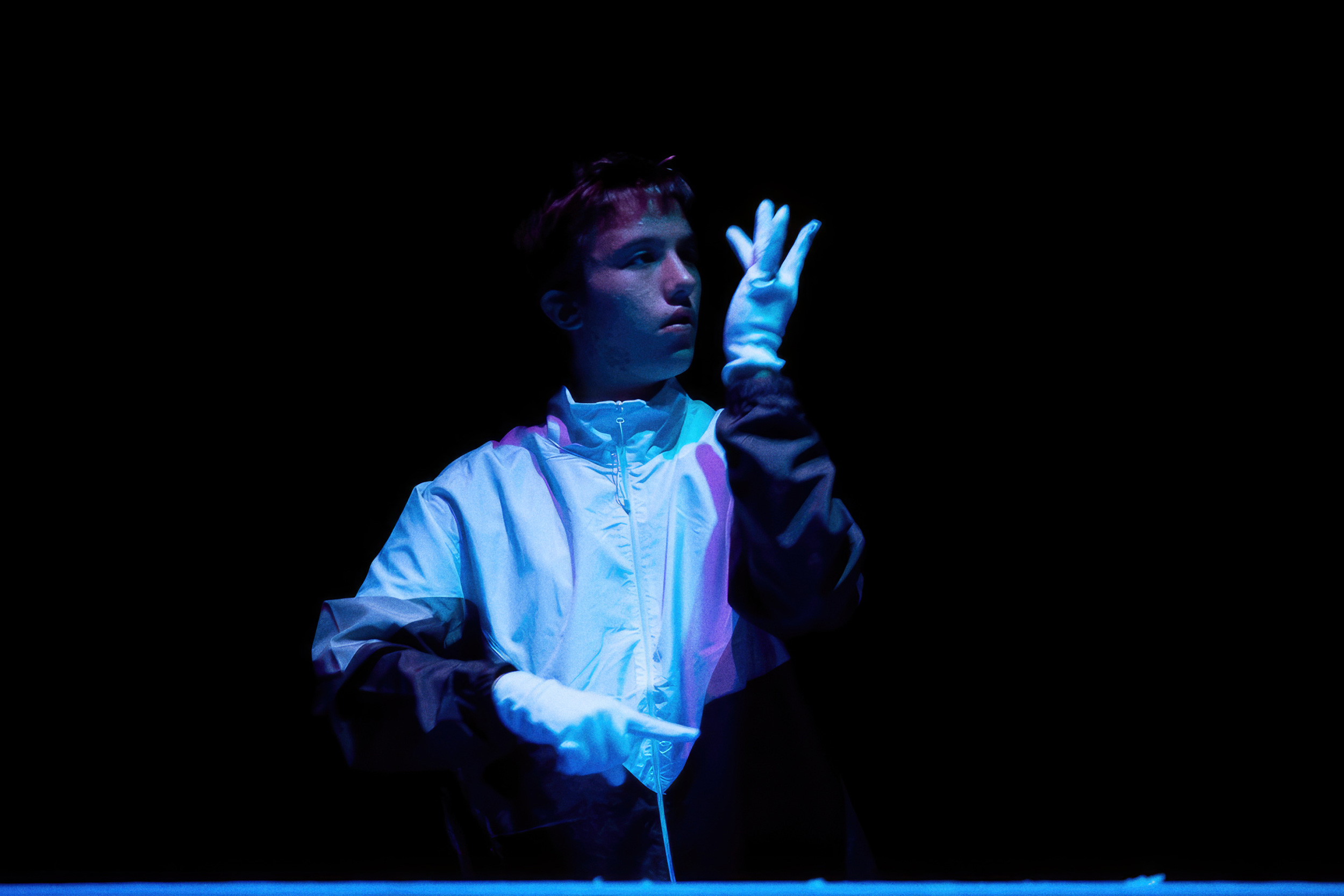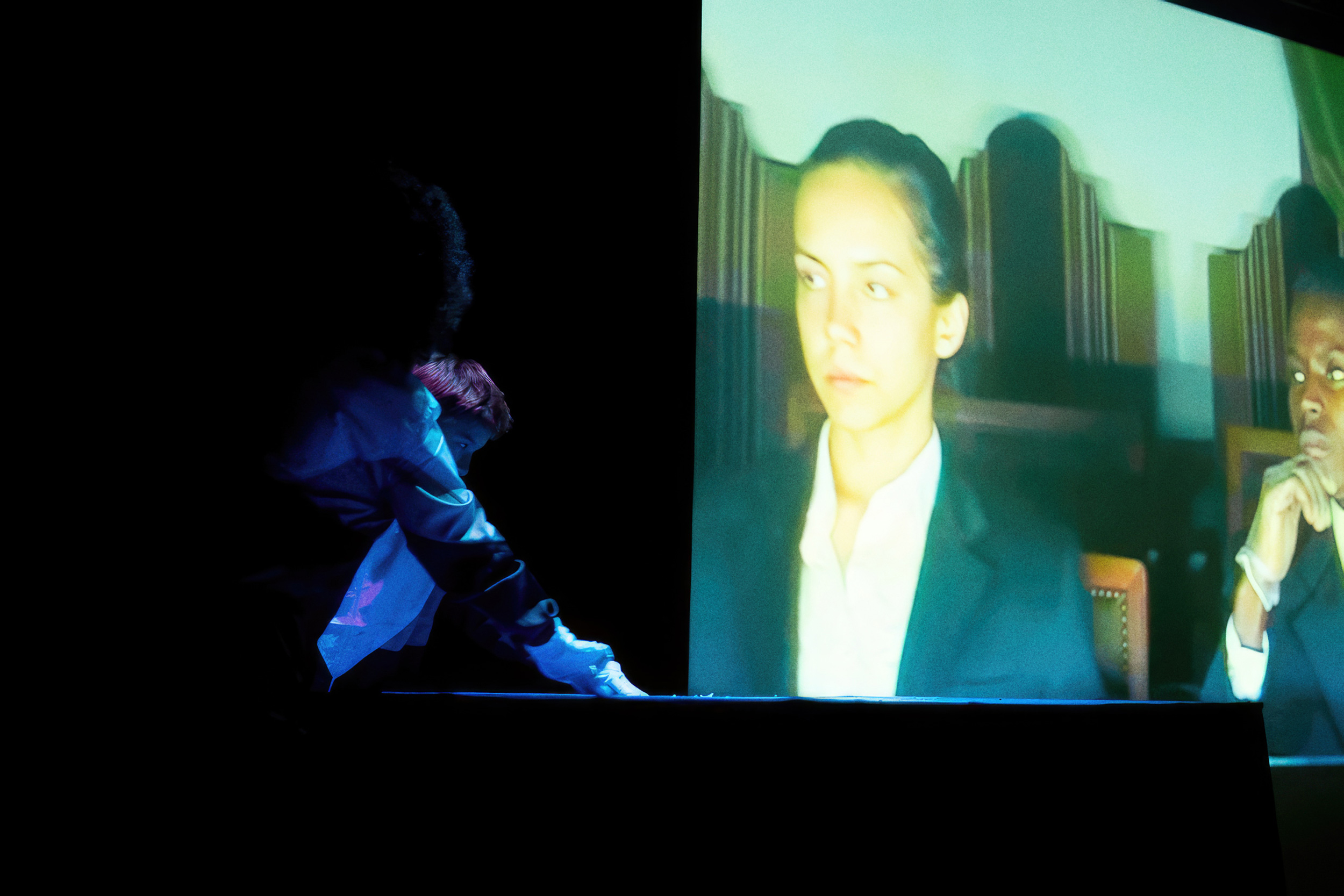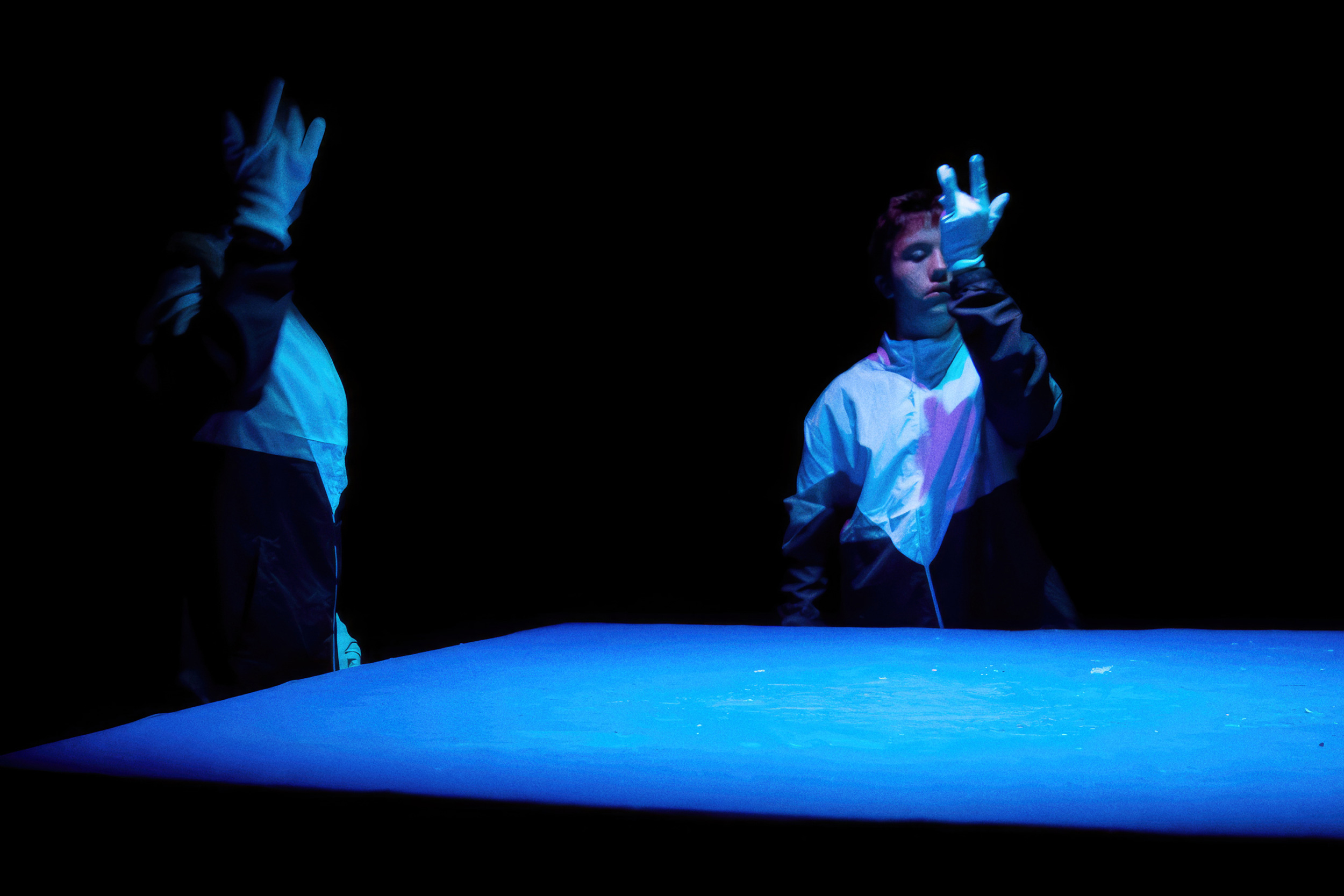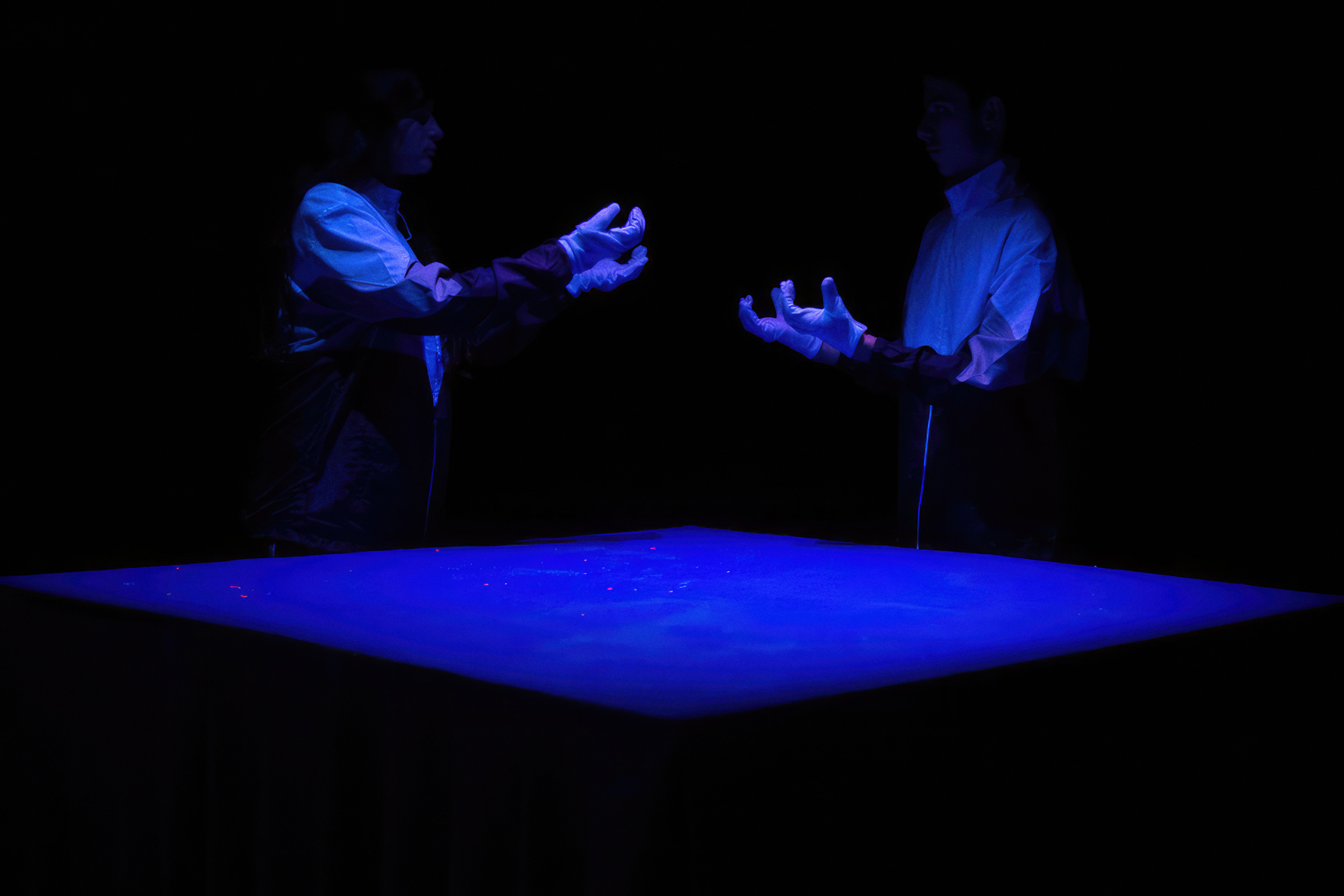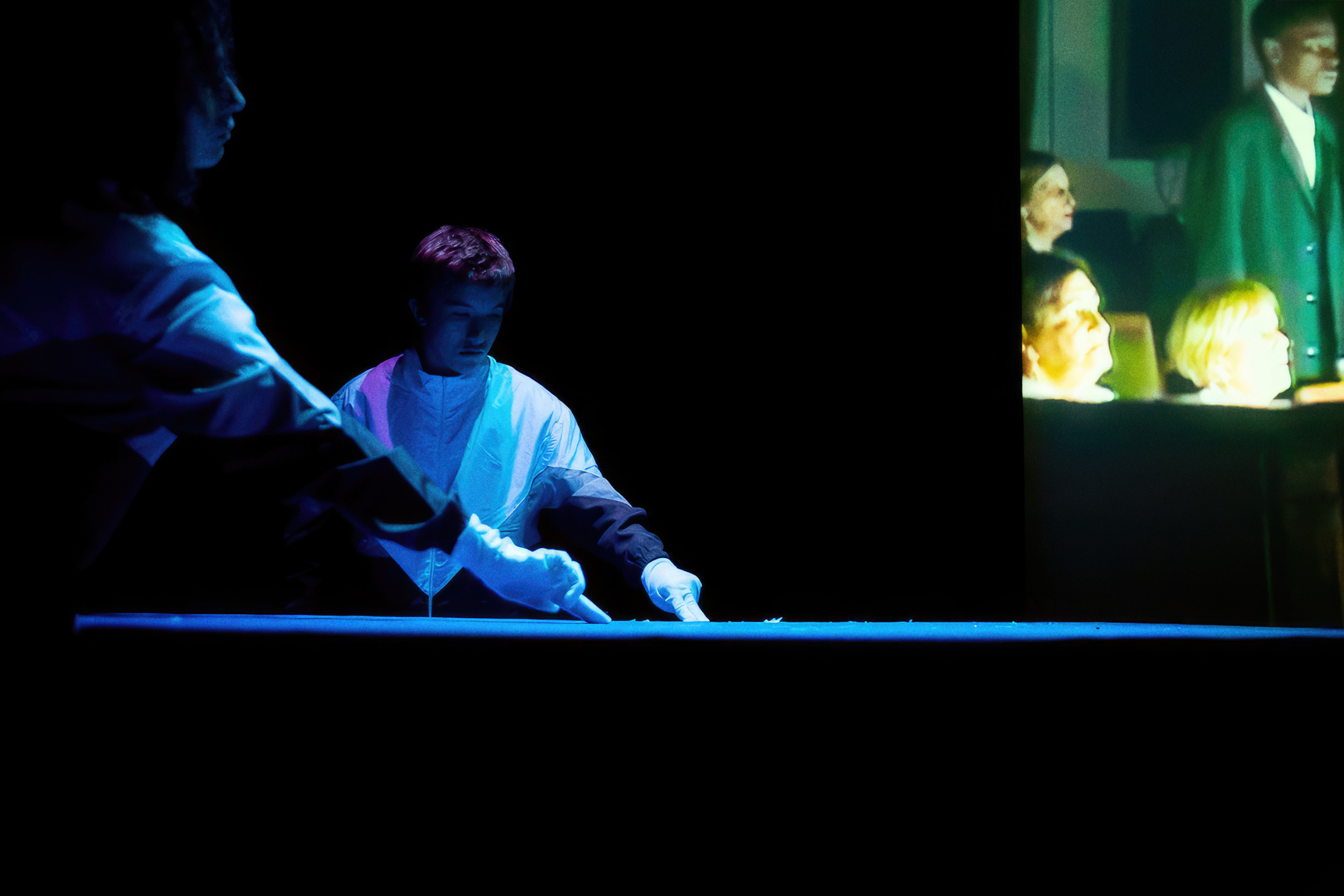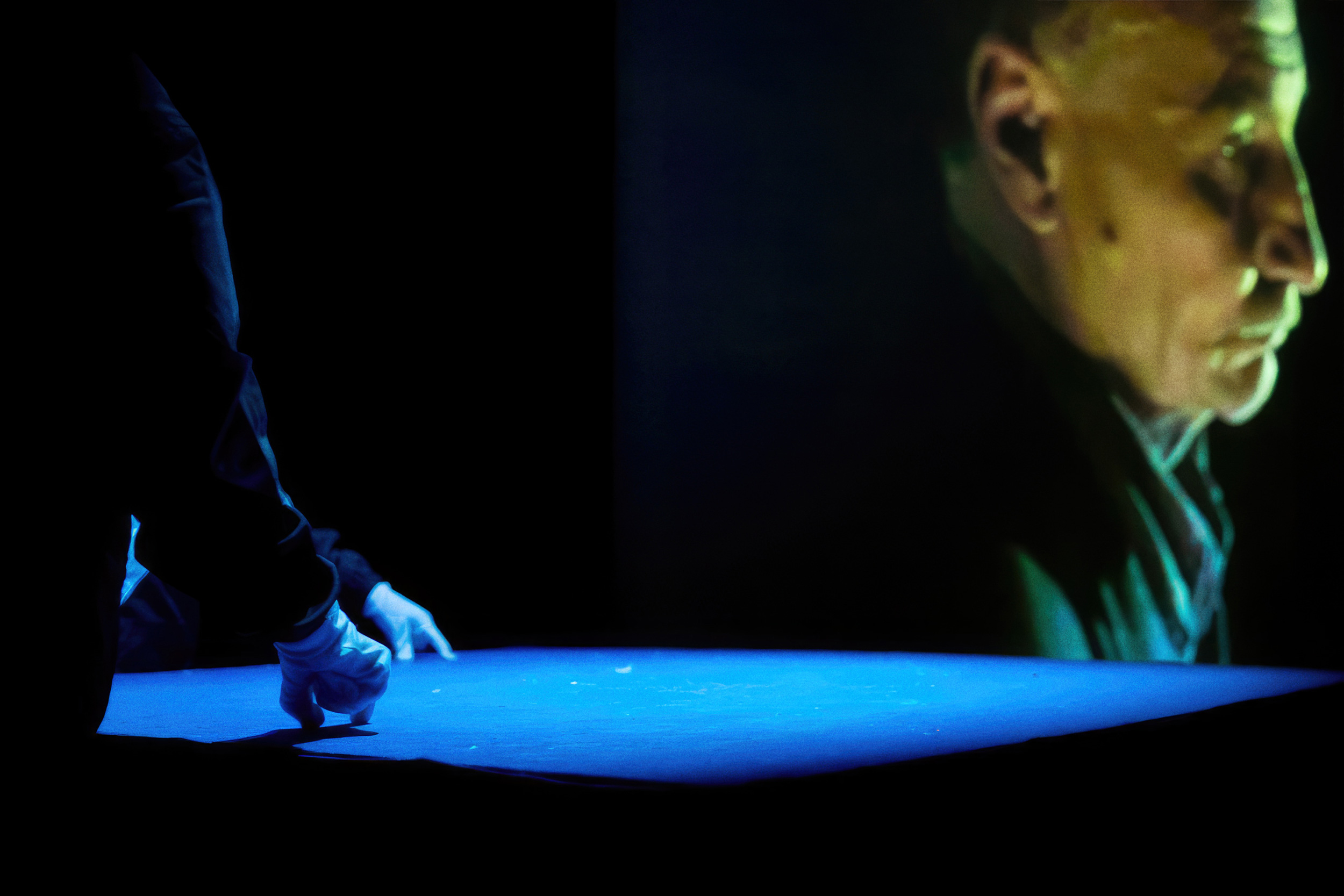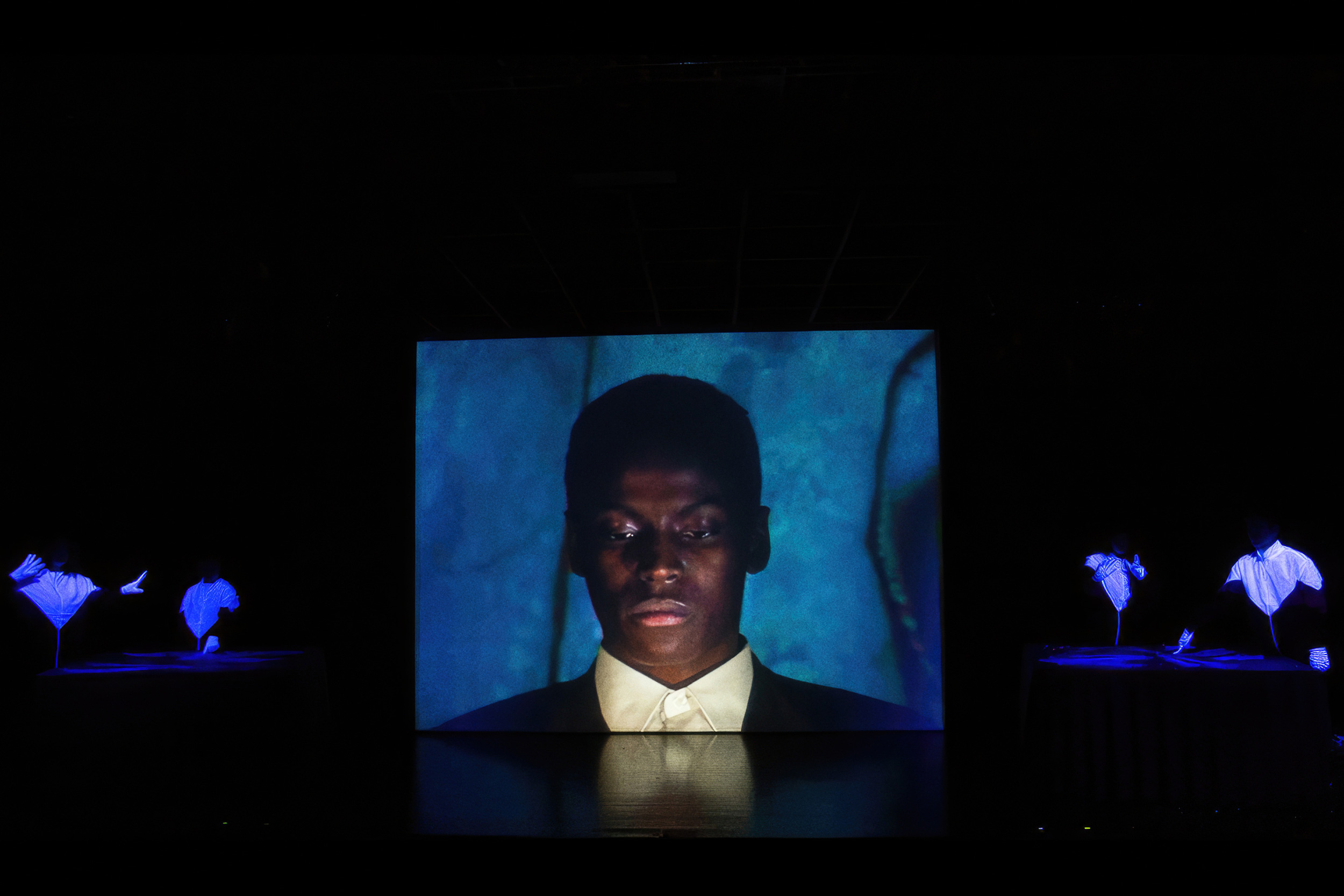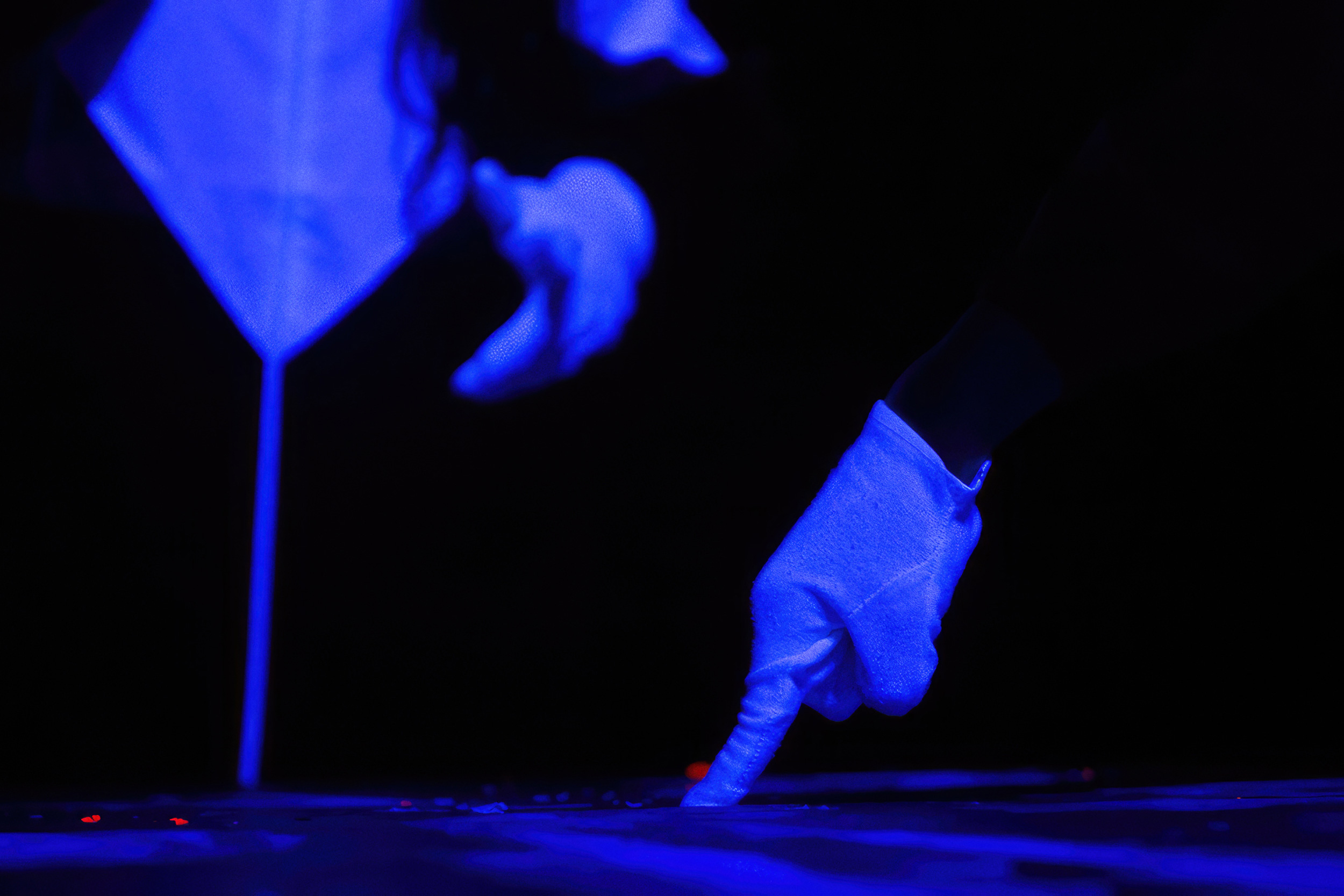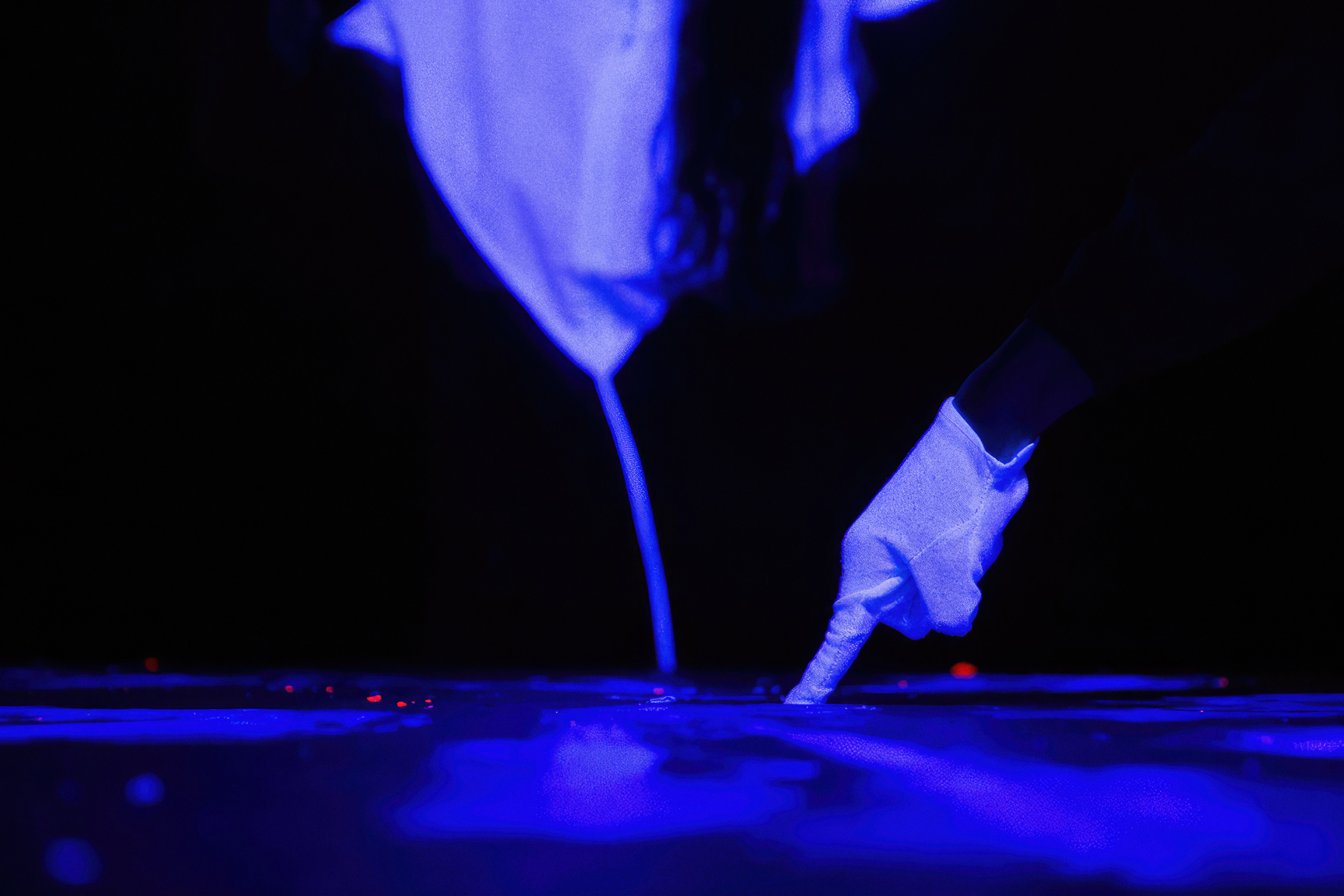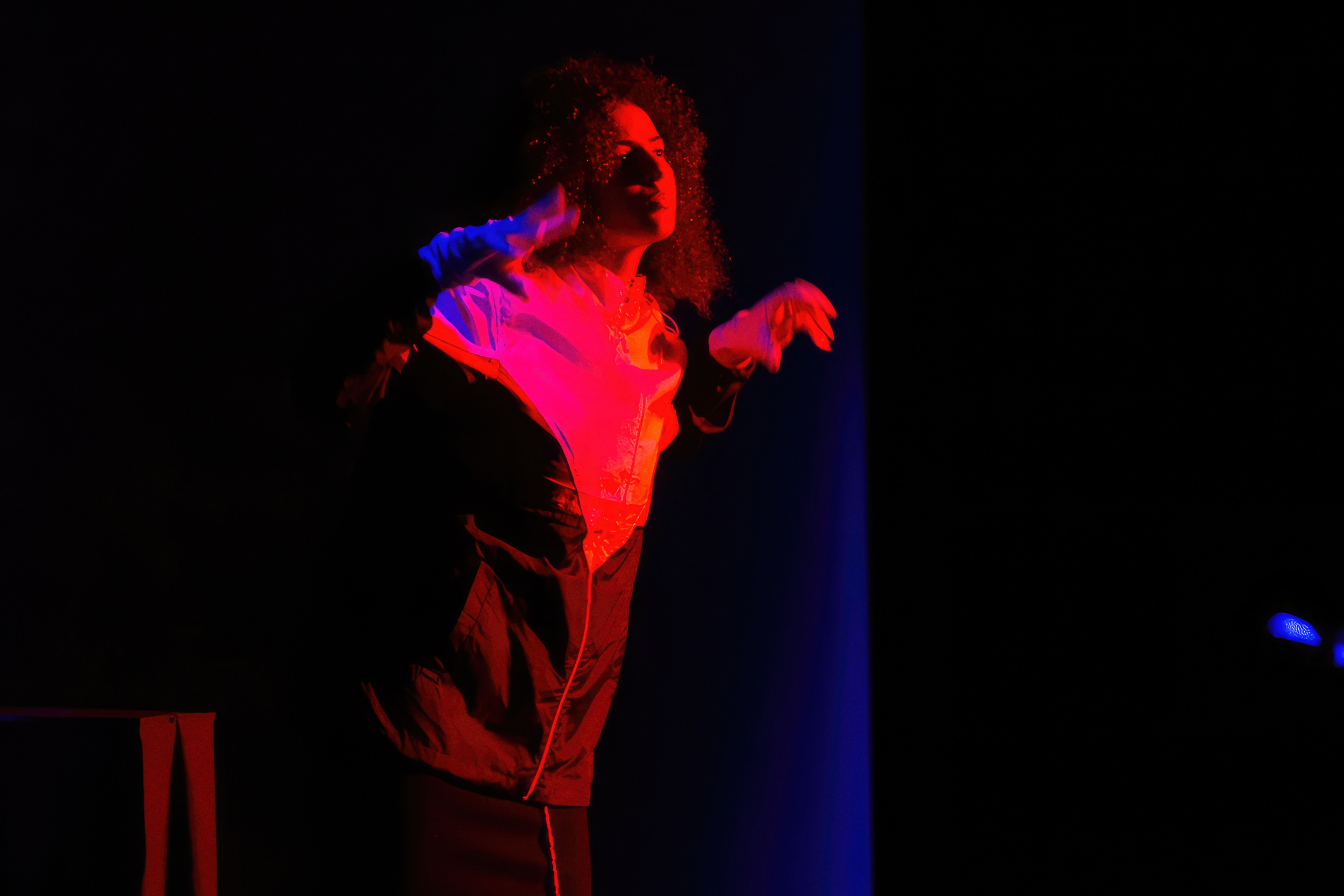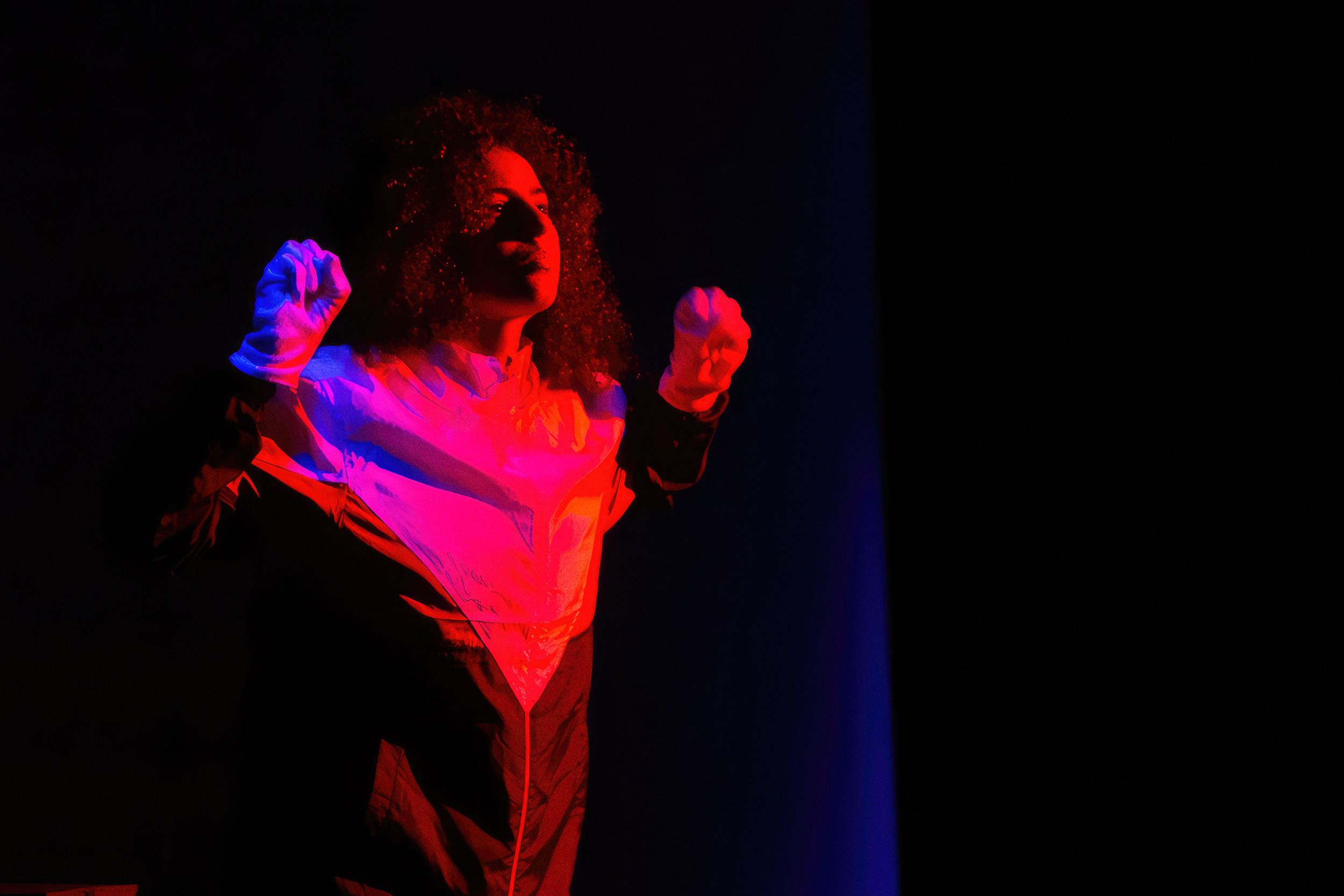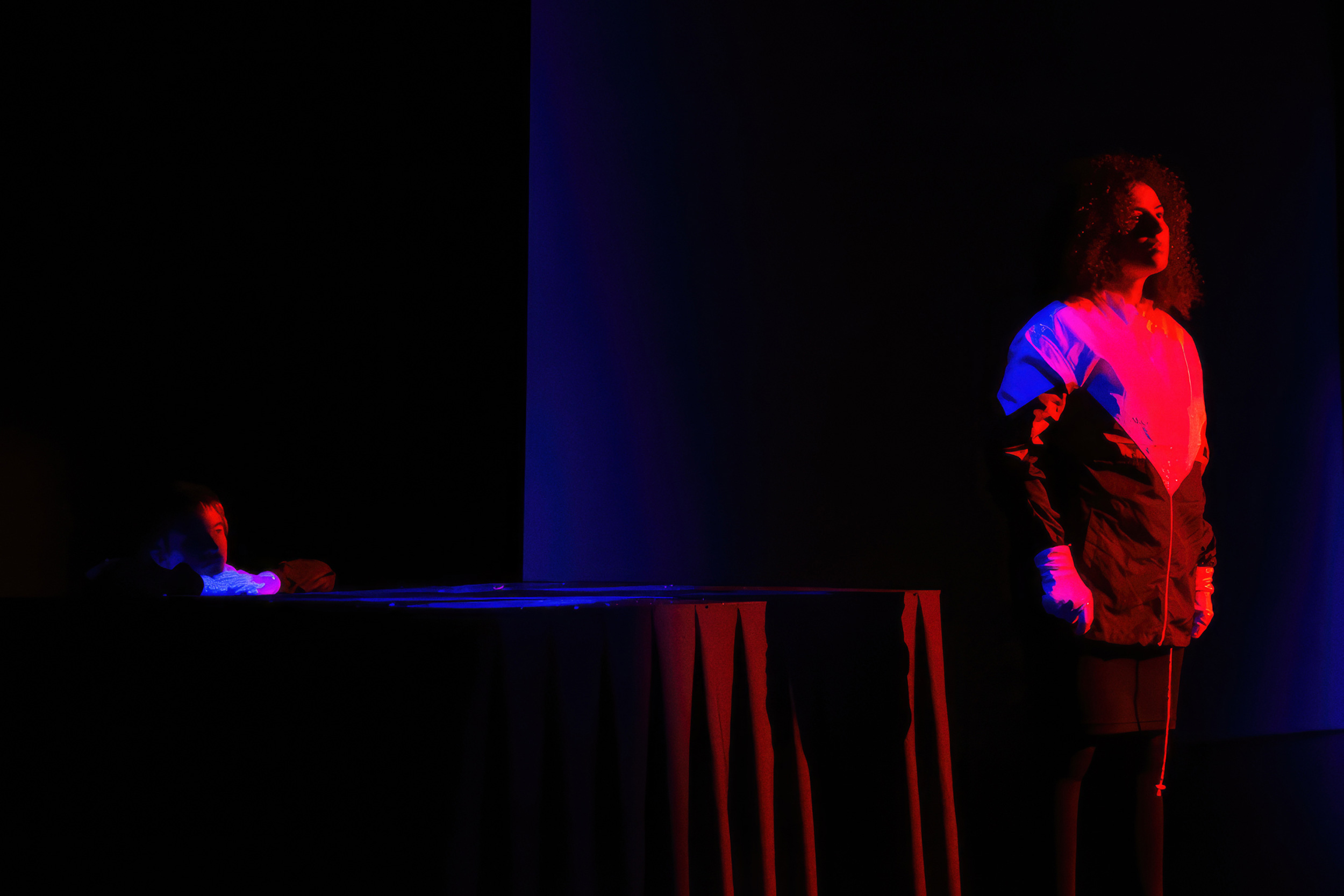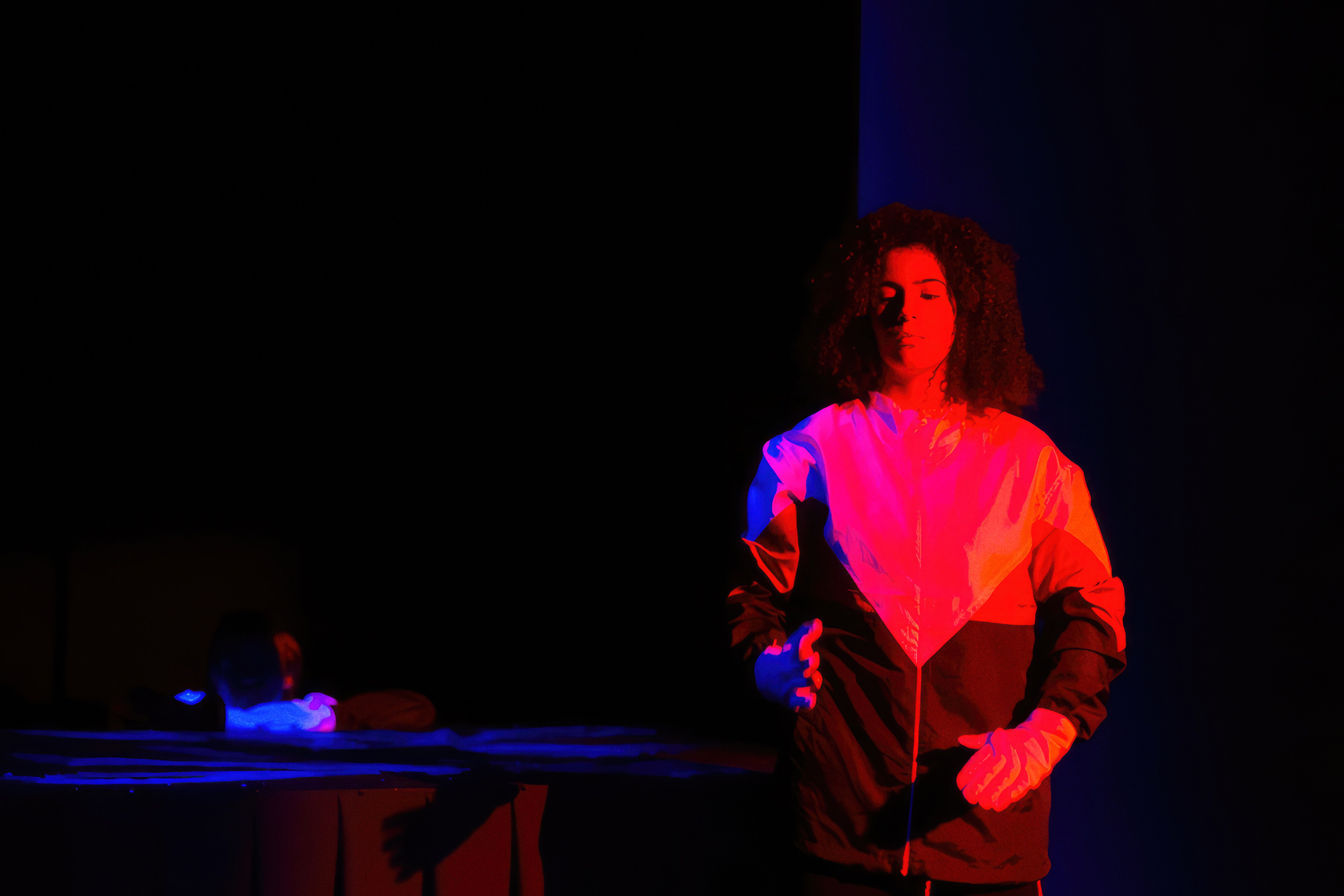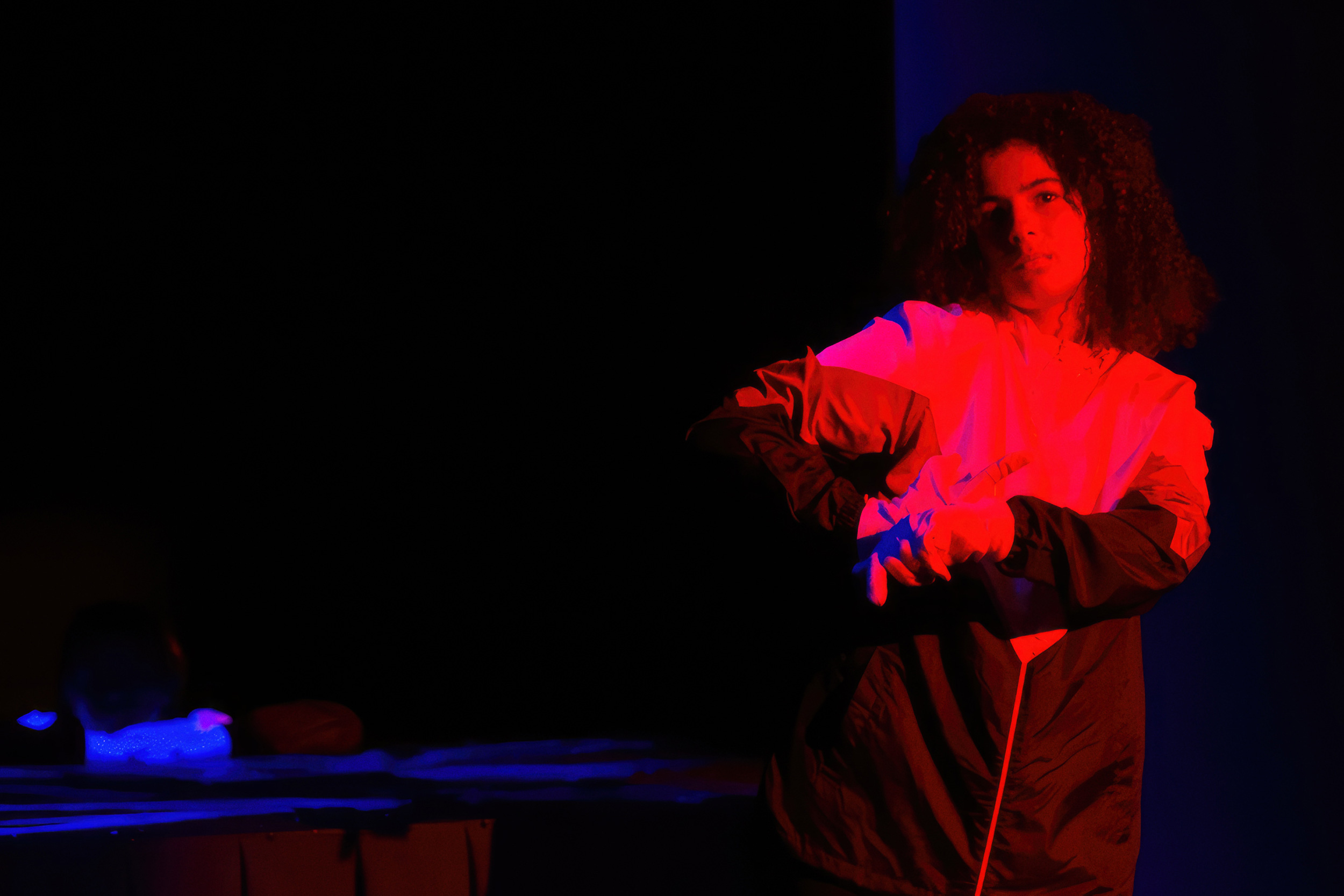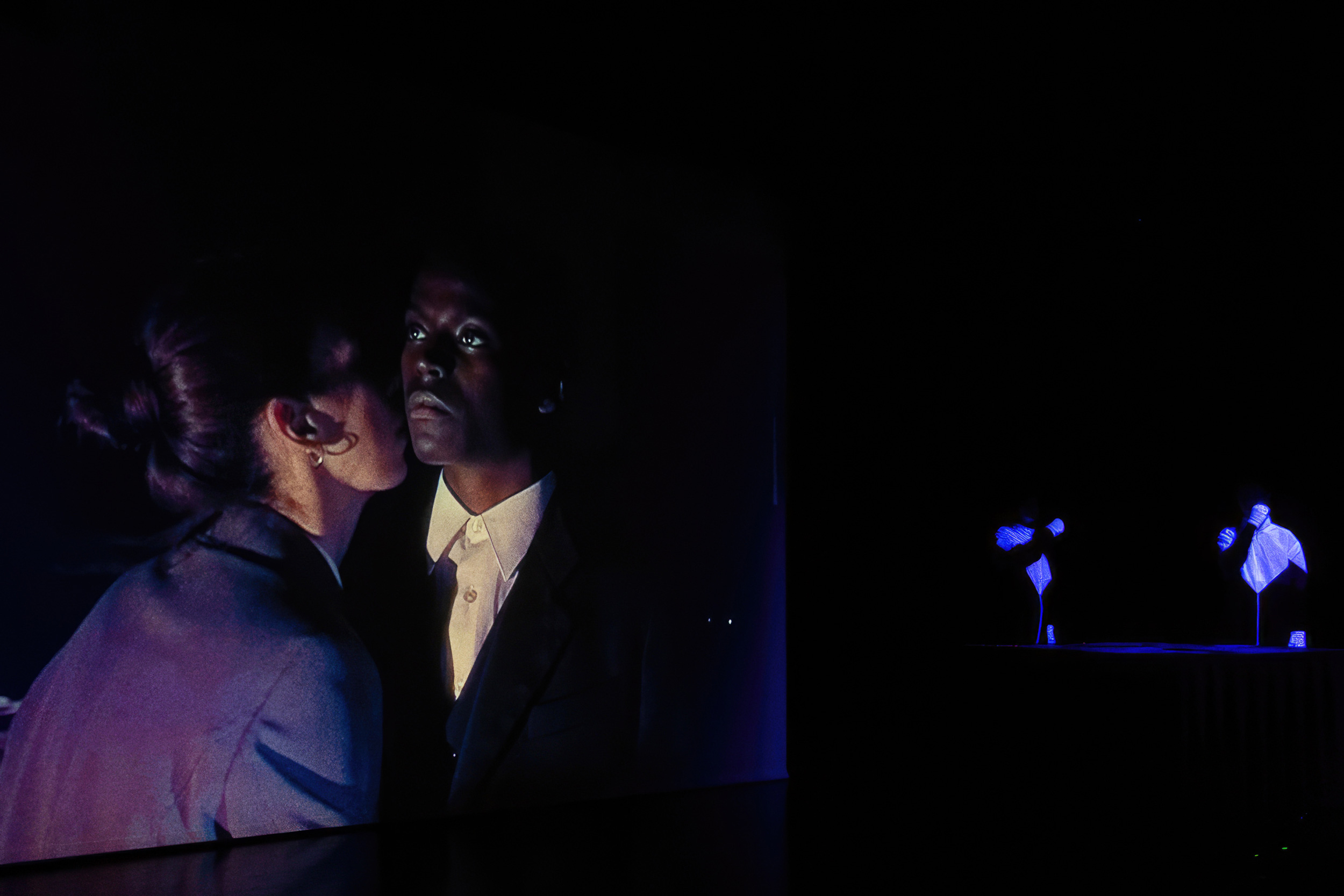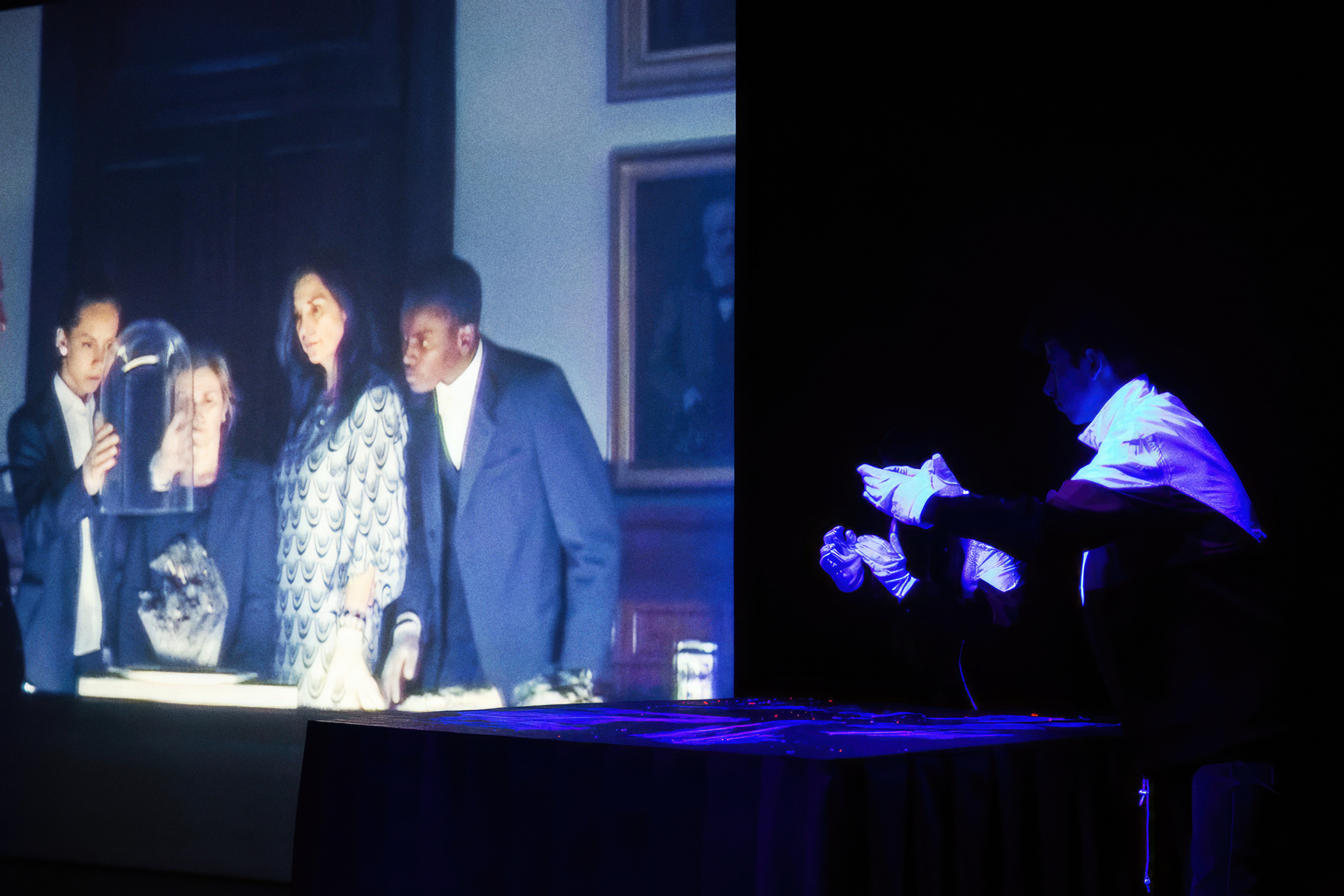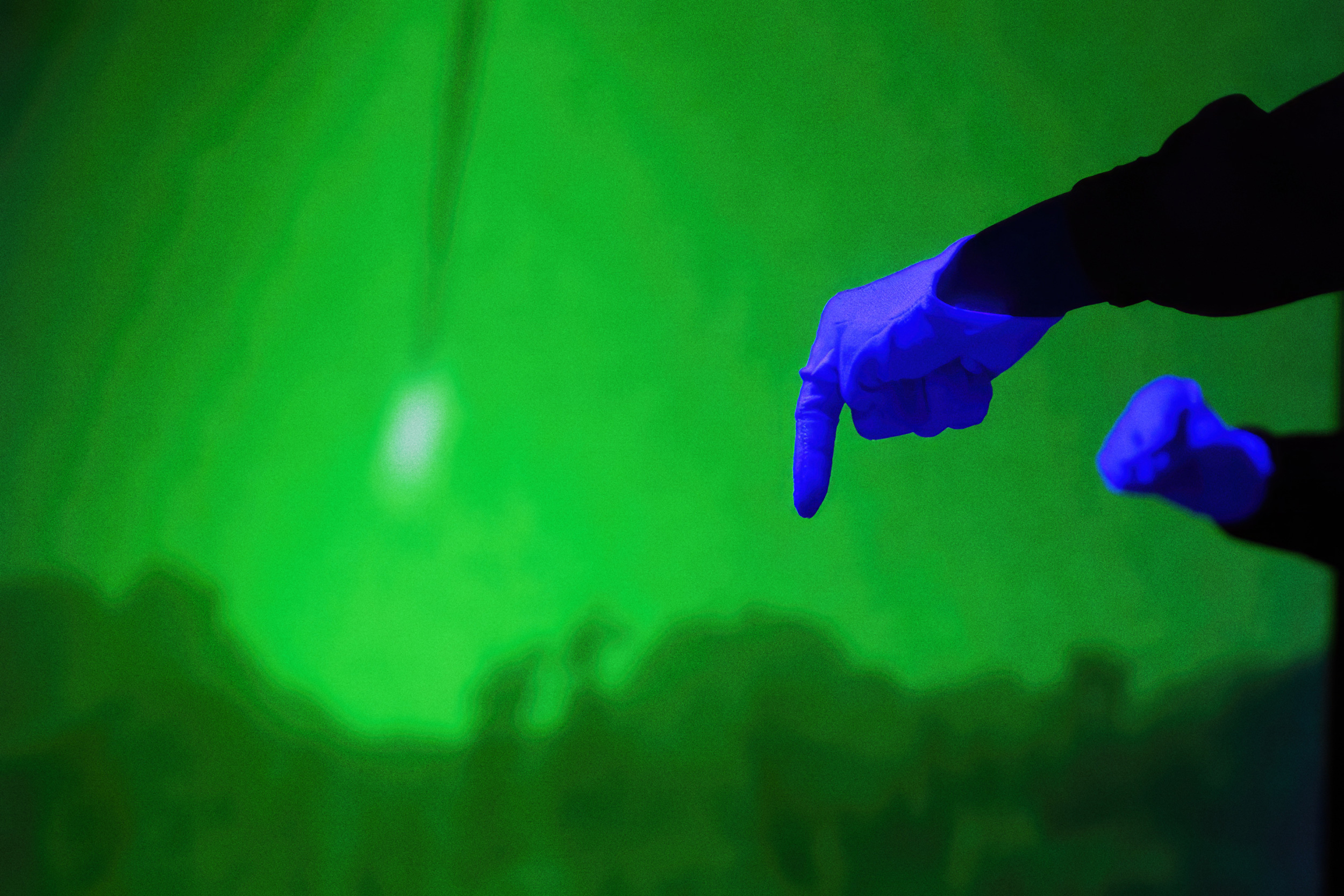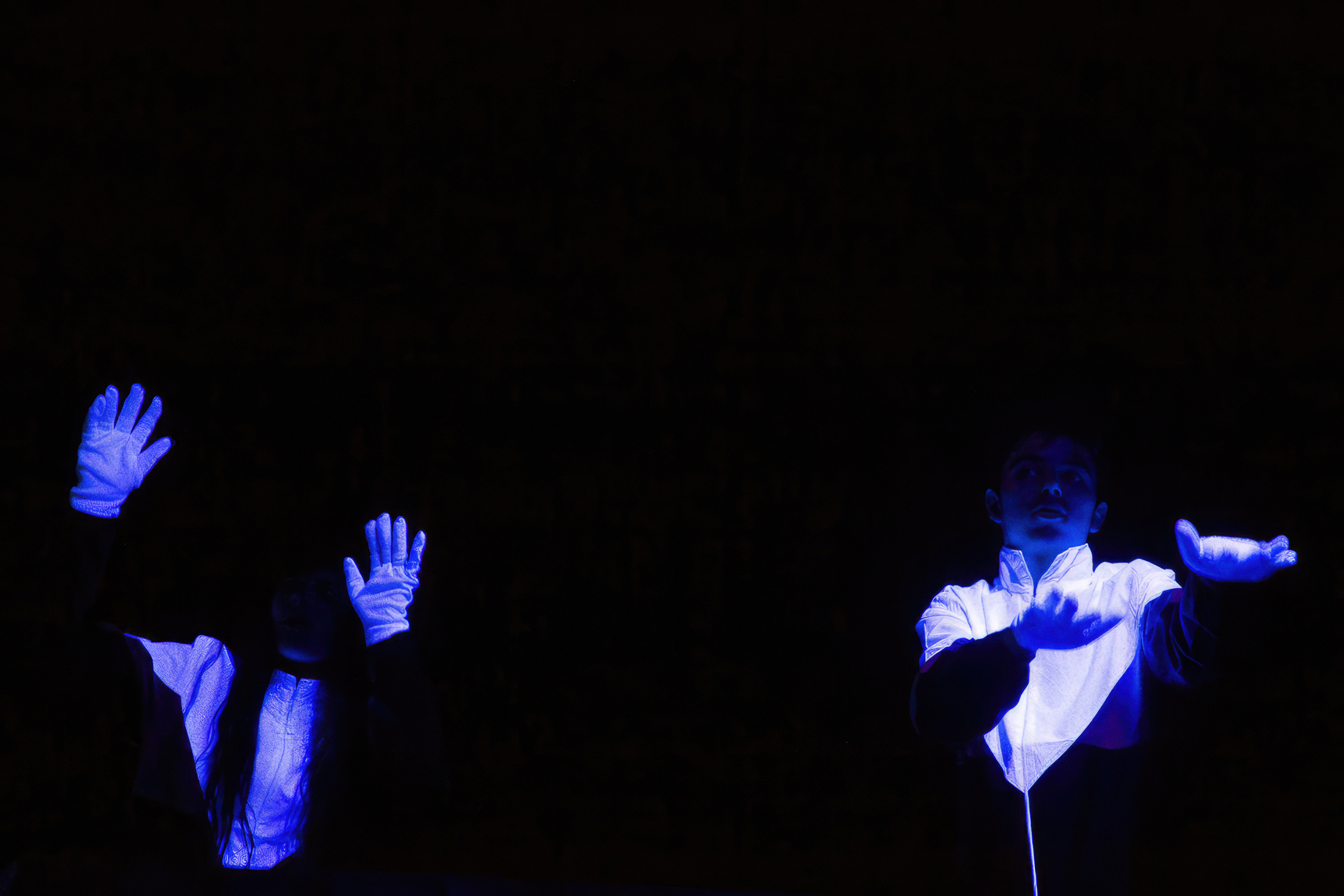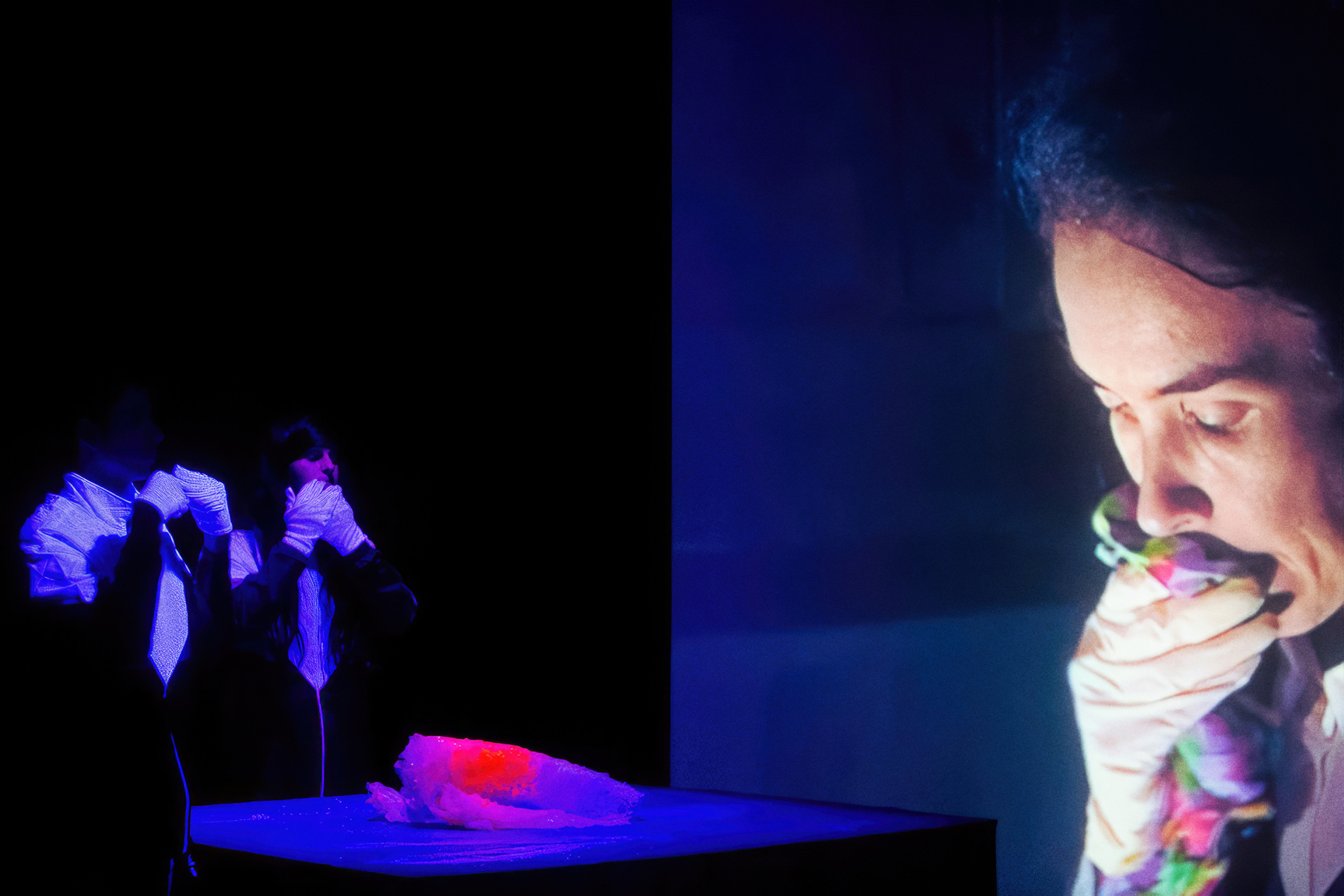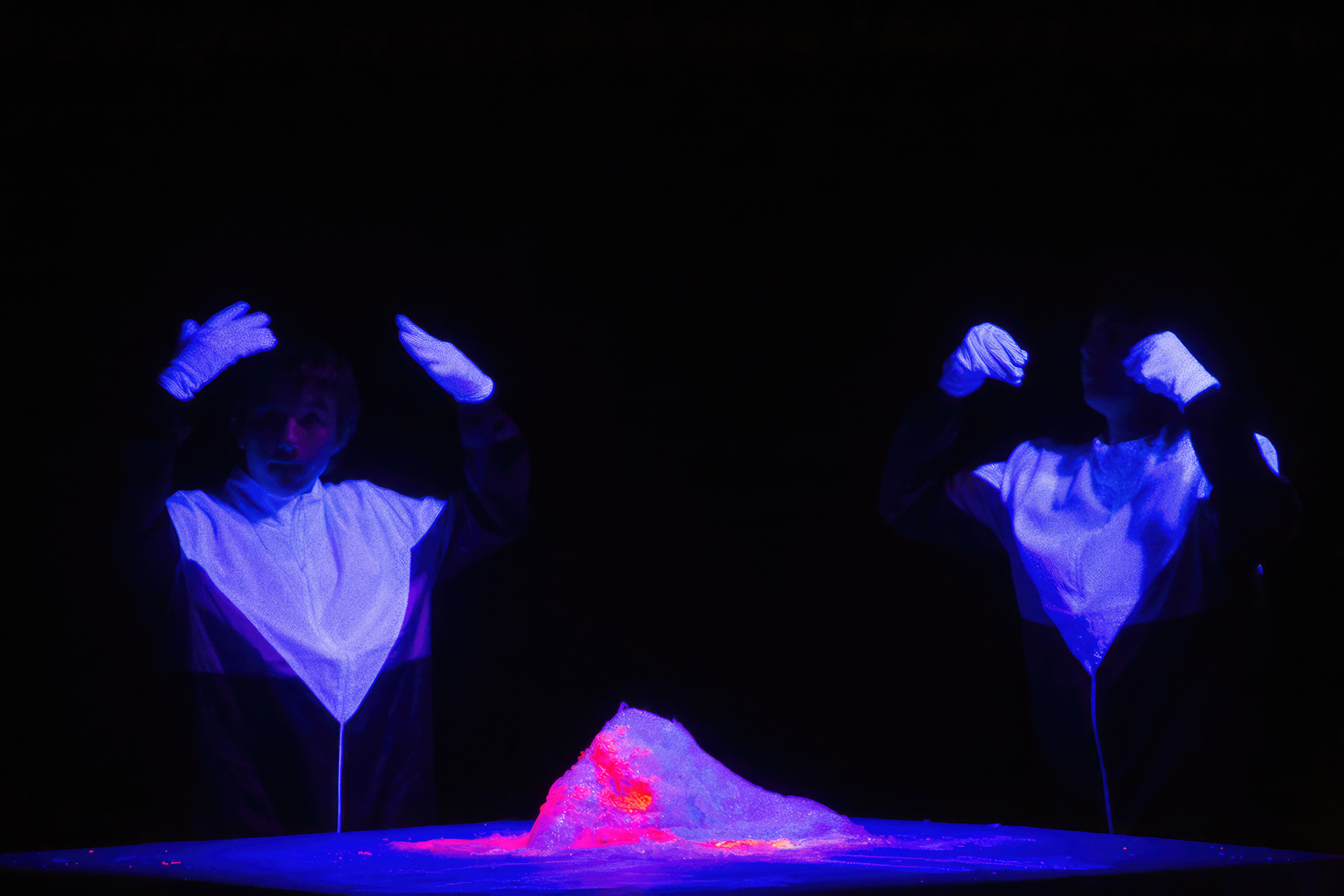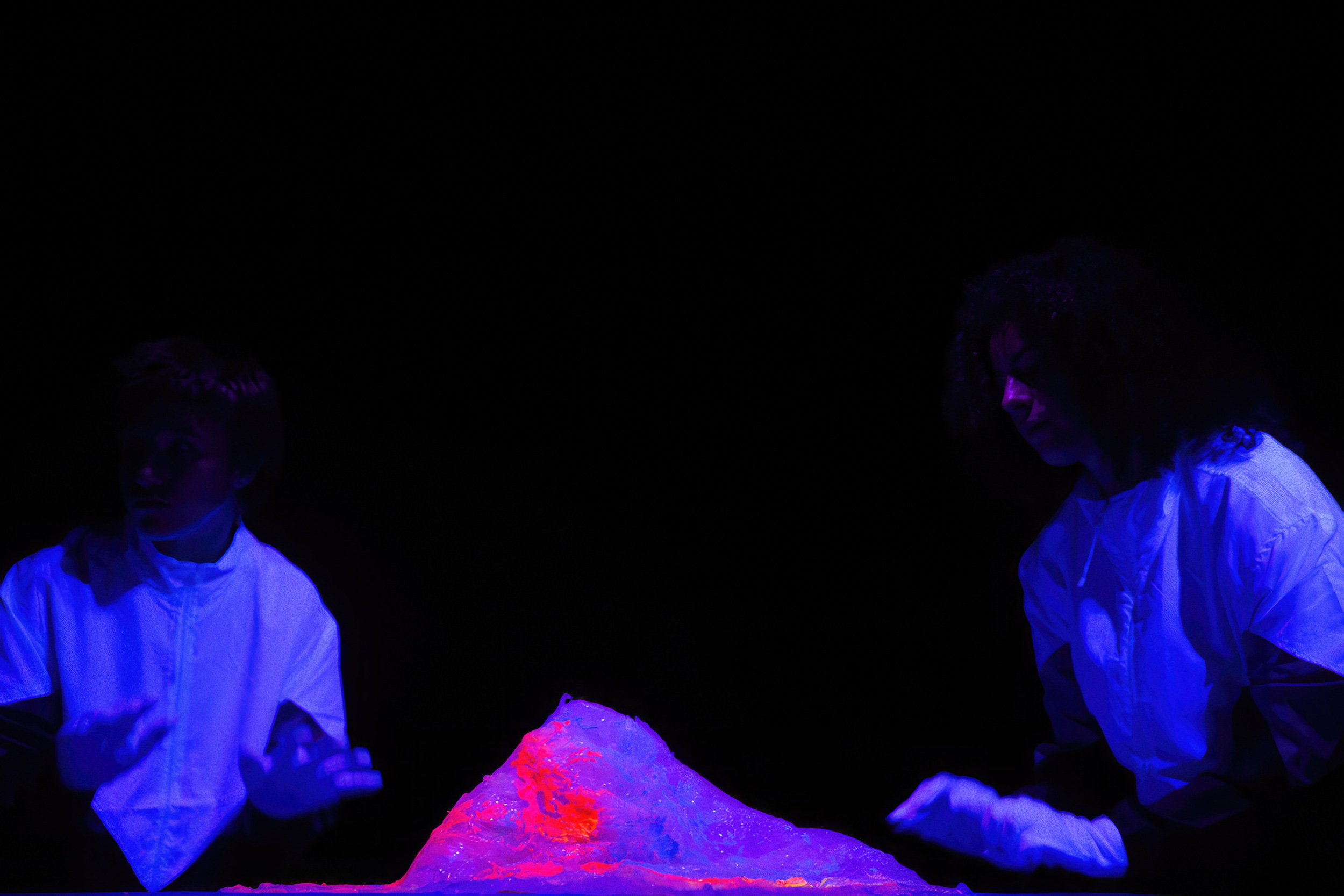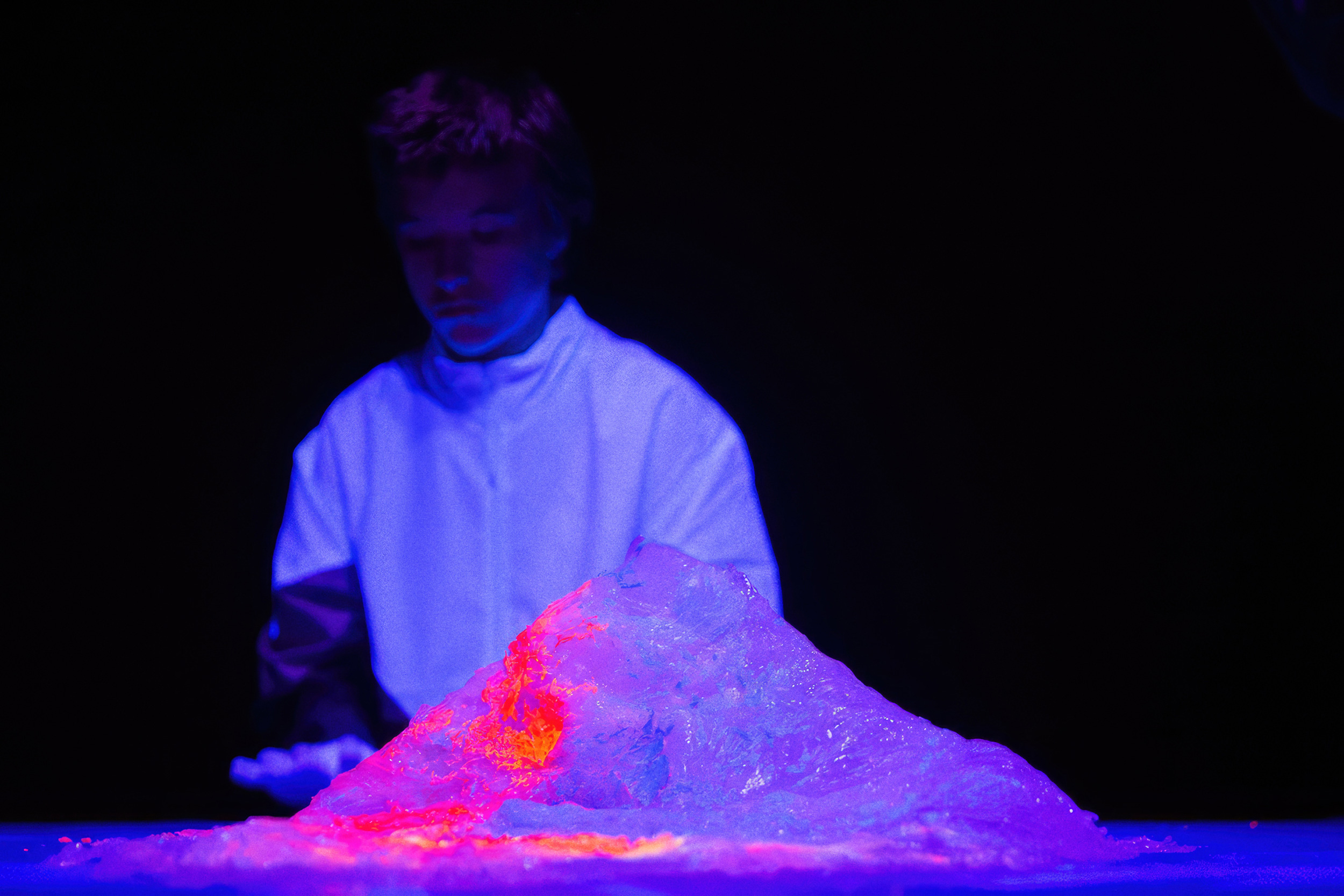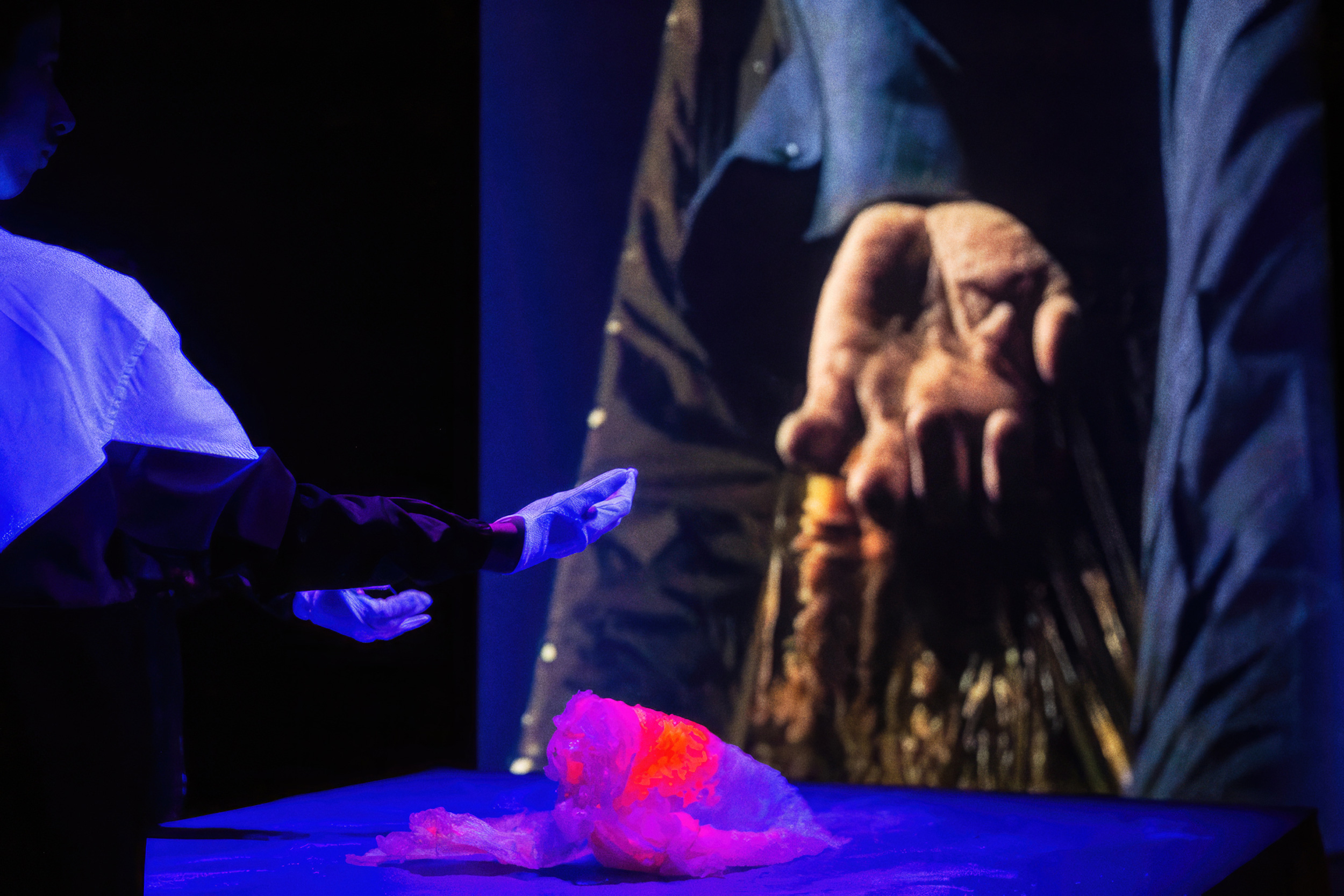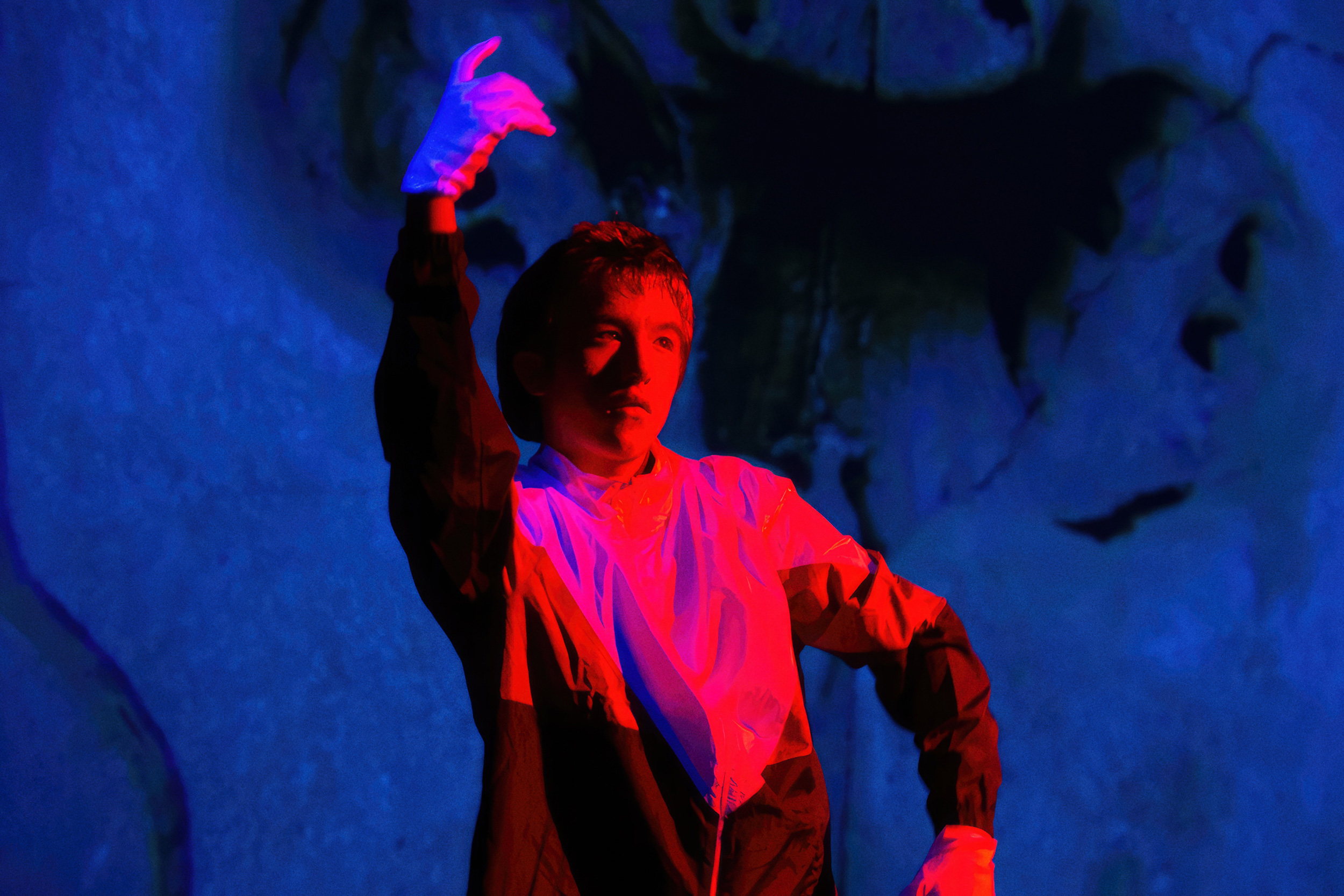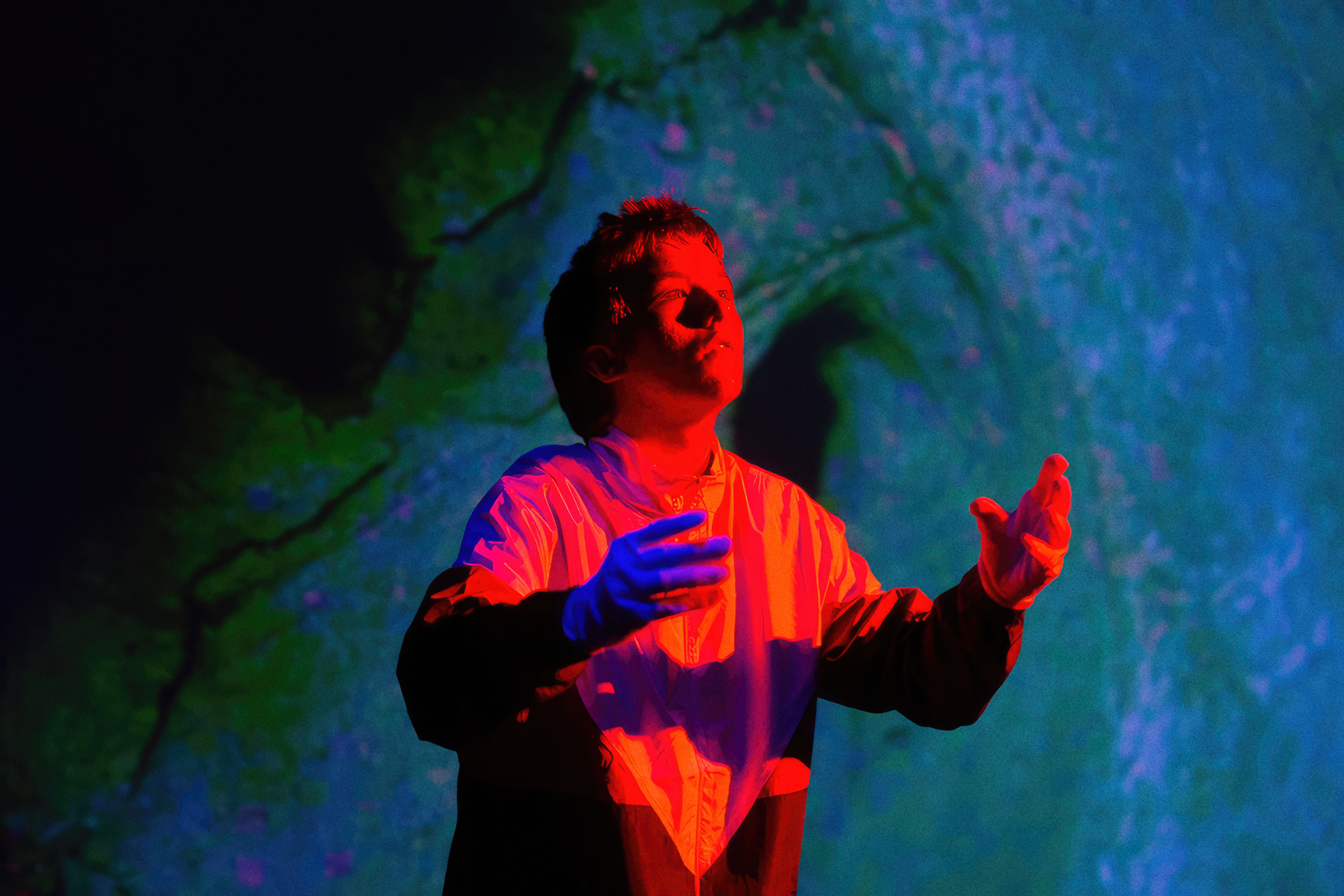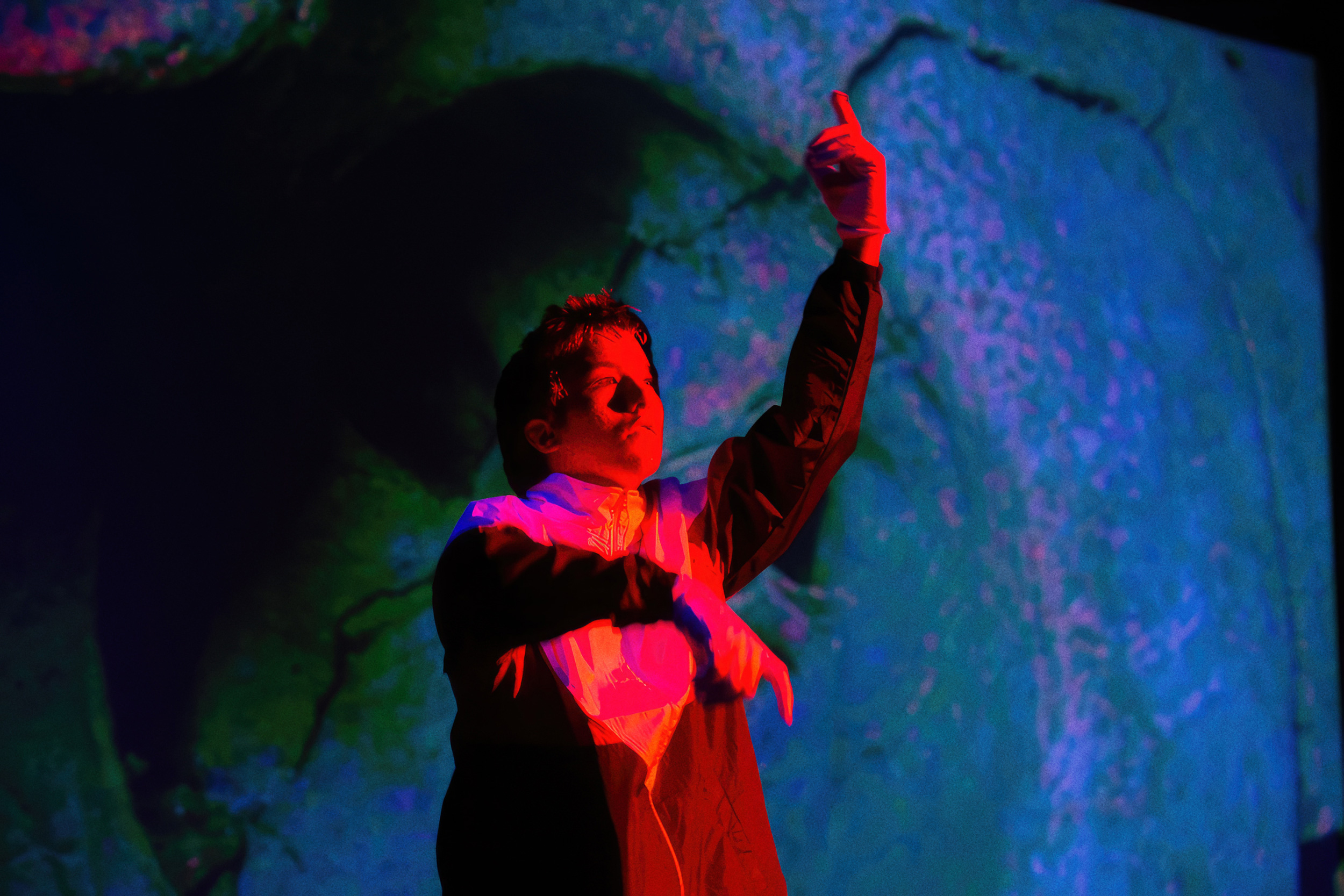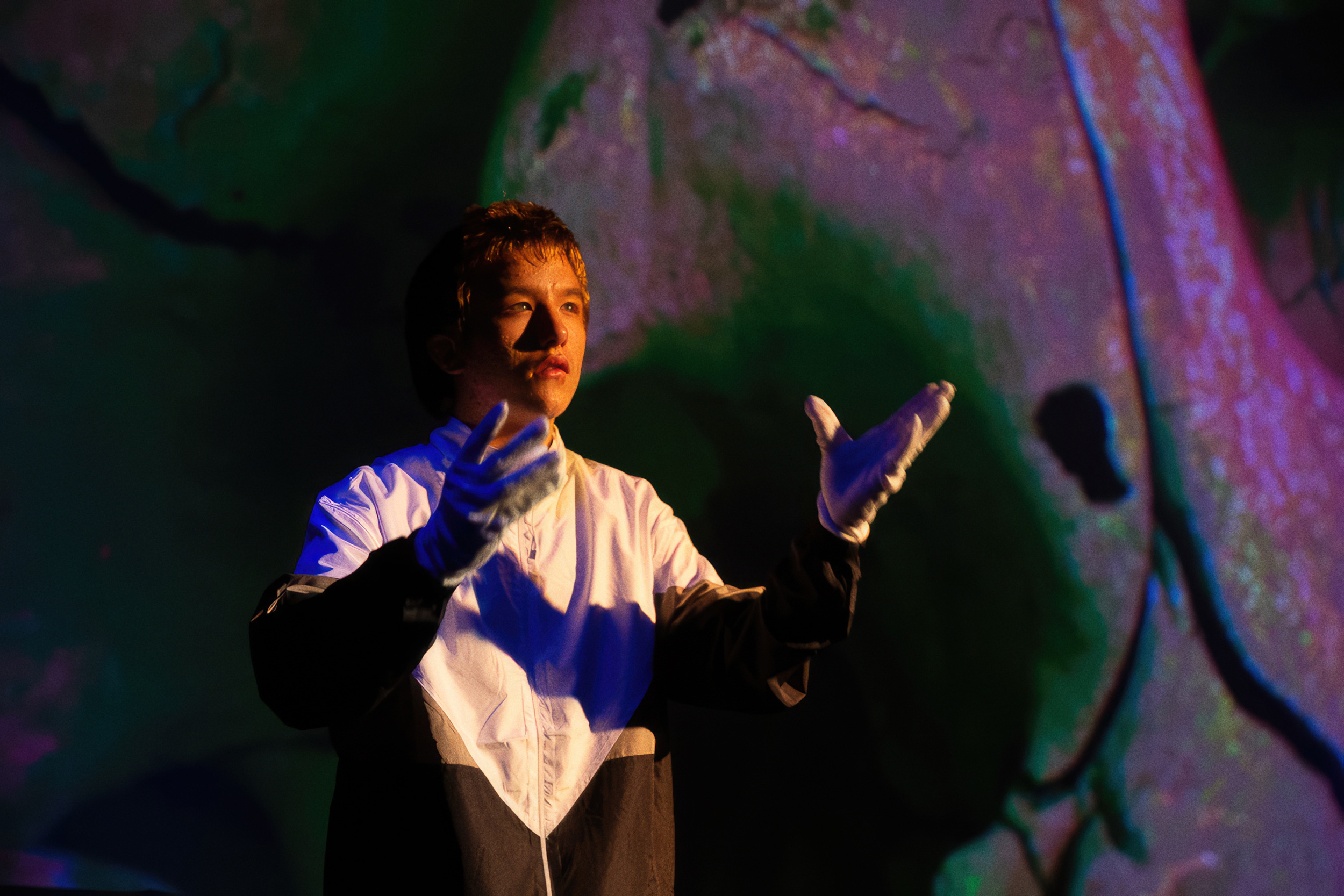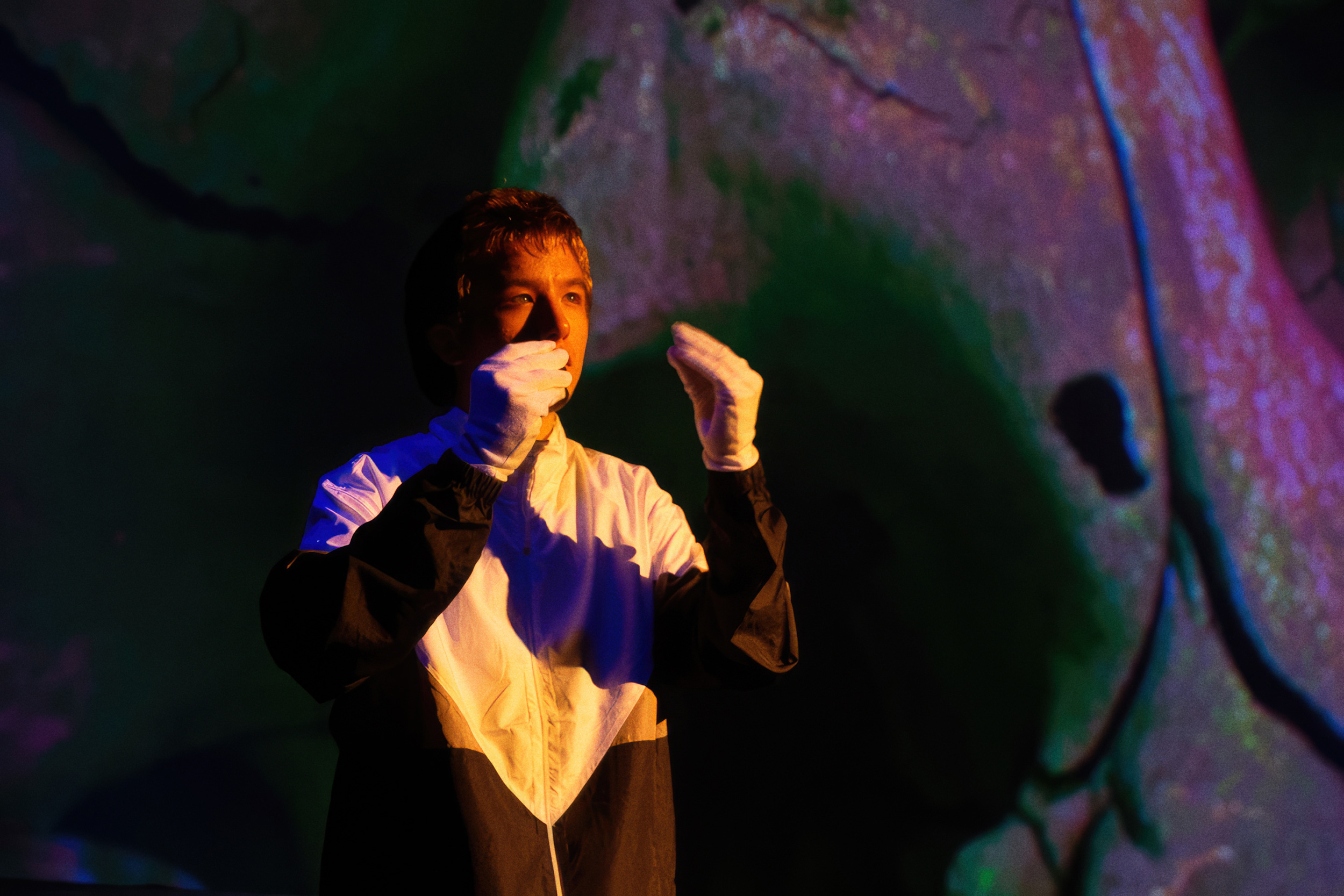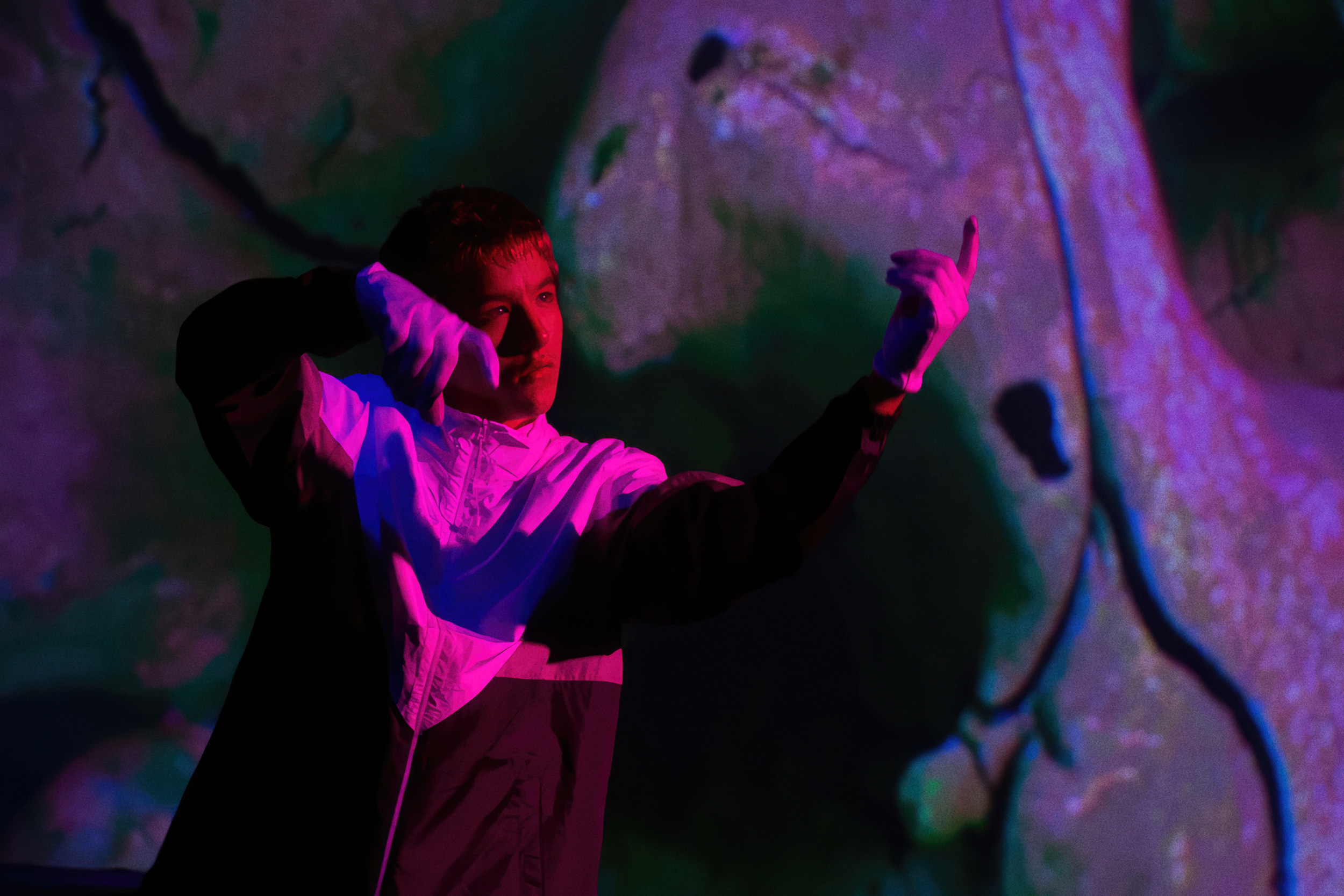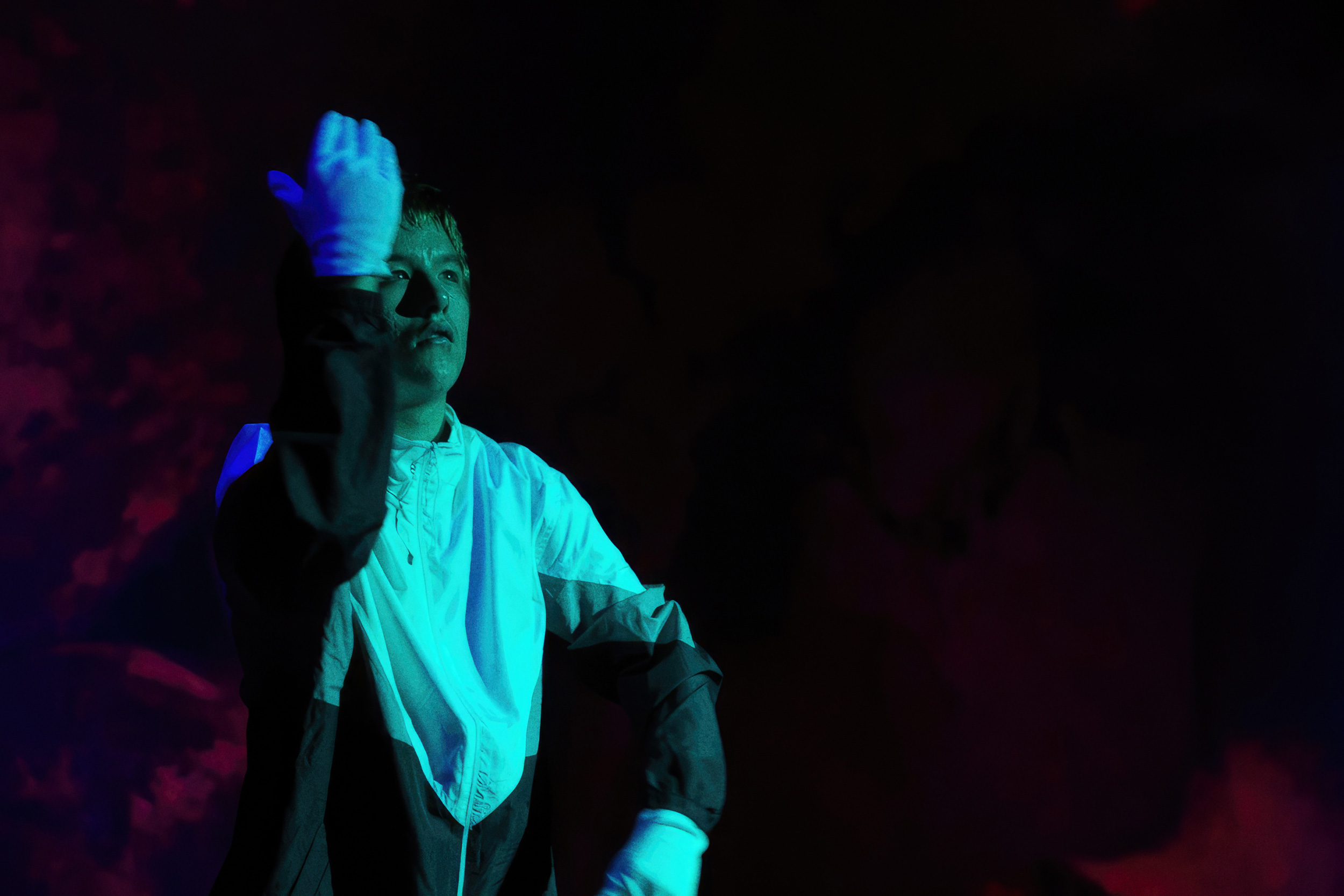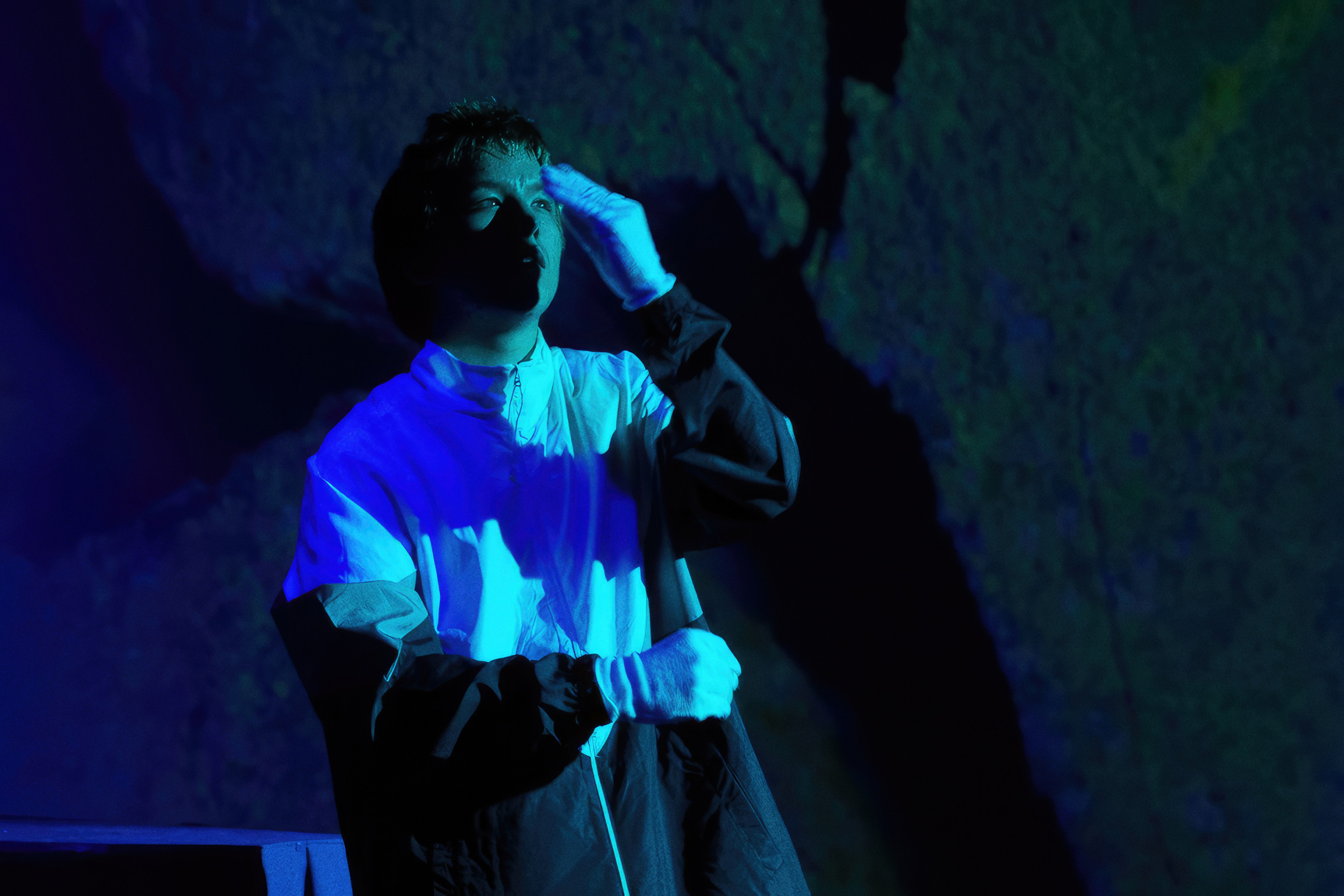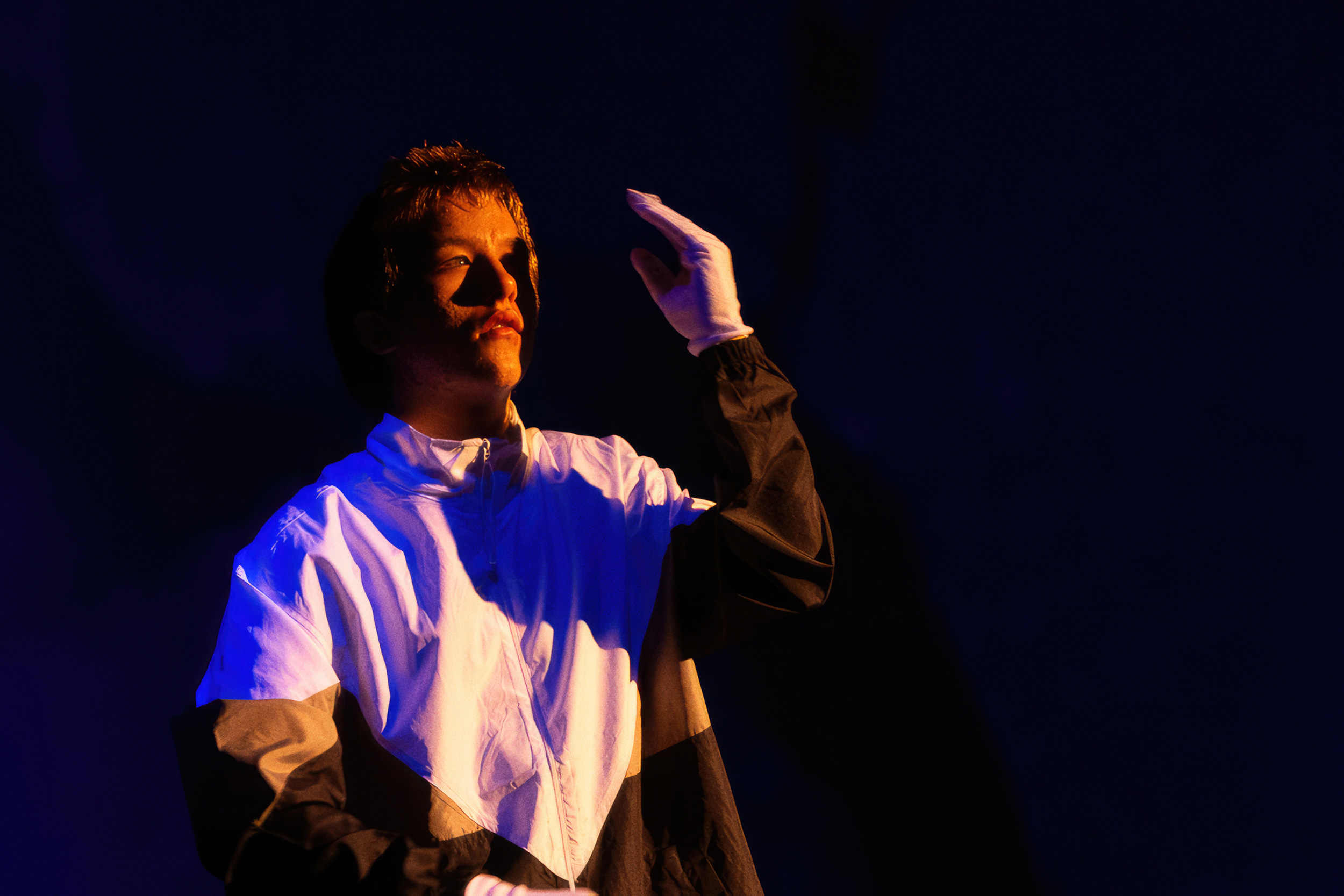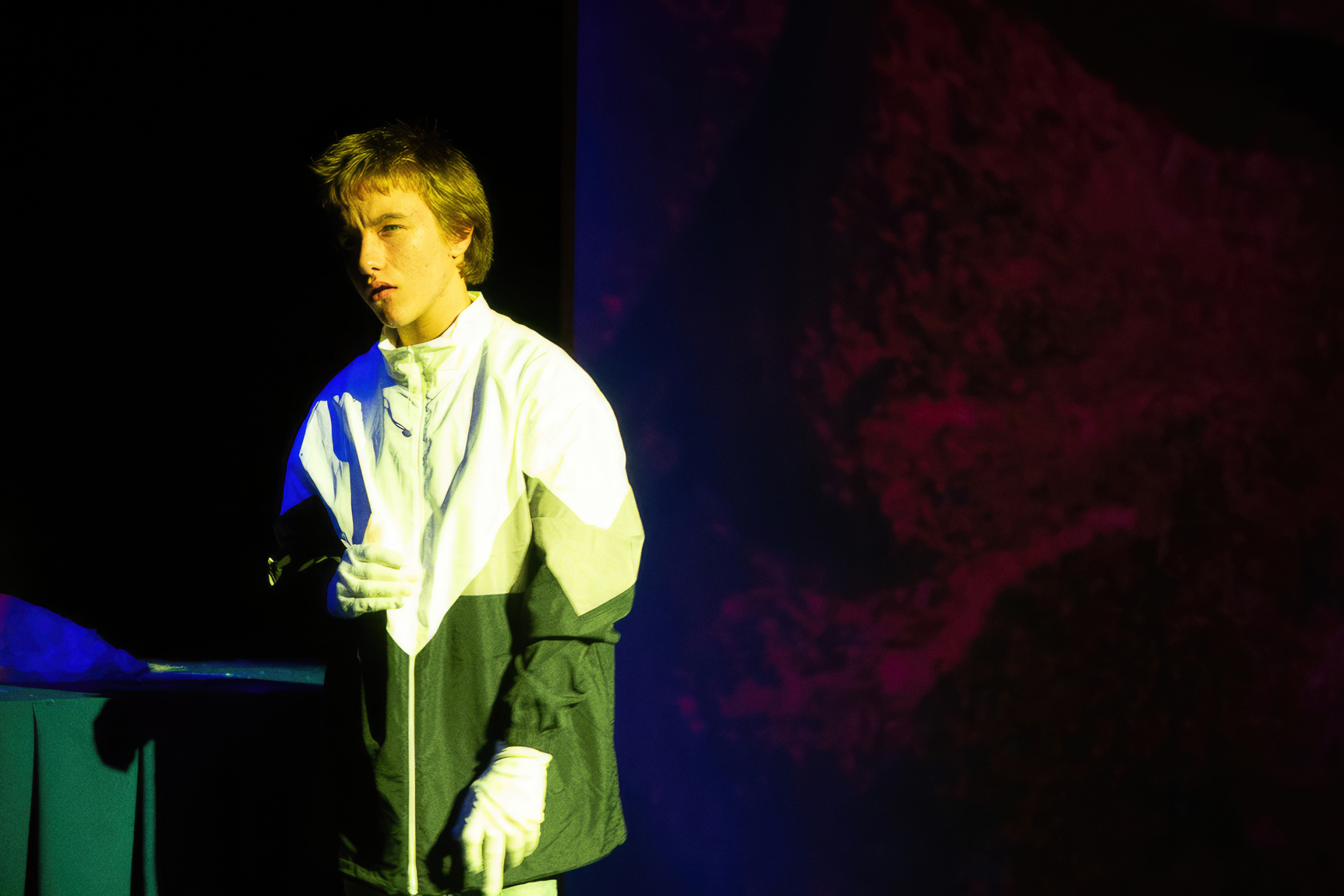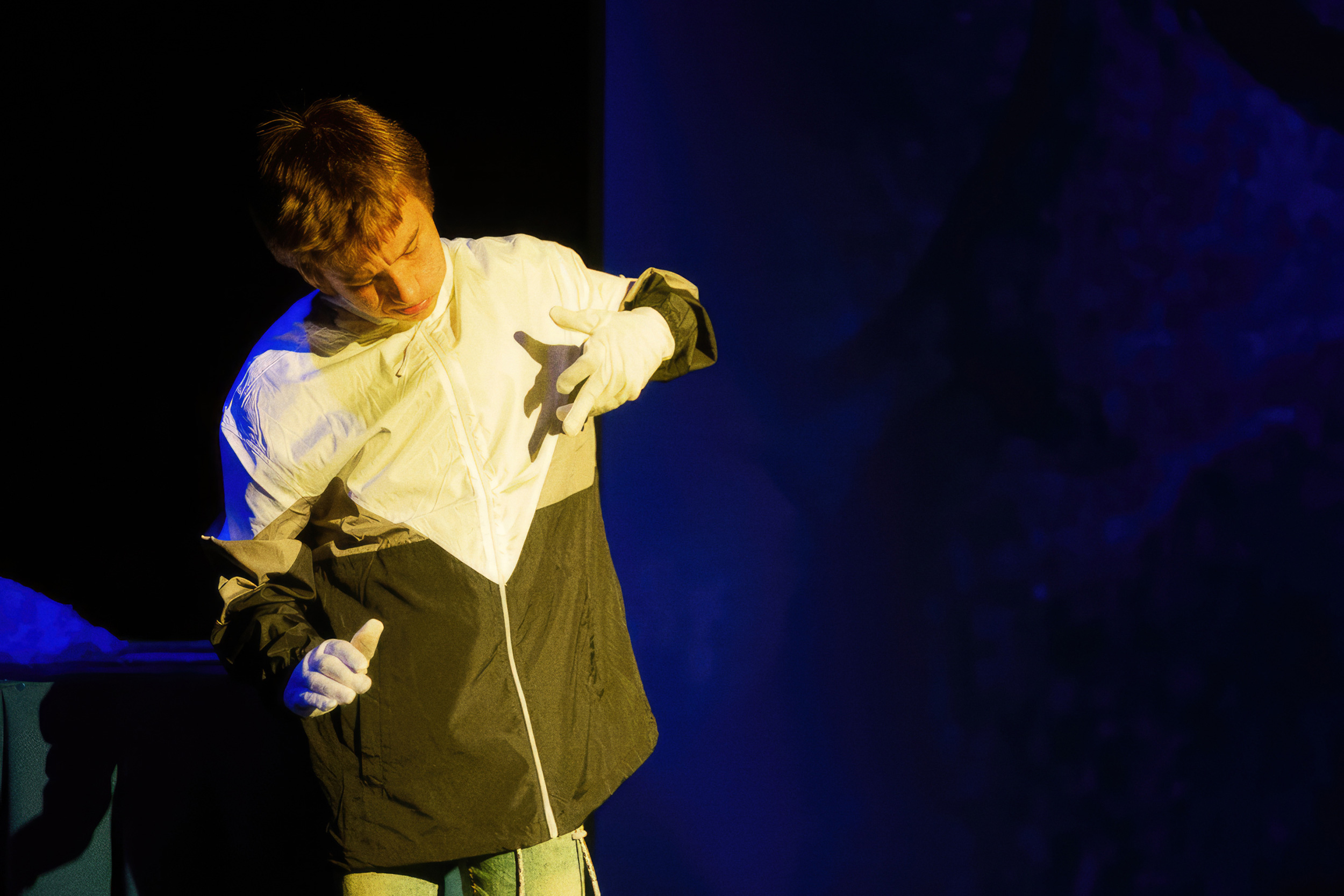Søma
Interception of video and sound design and is composed of two scenic elements: a screen with a ratio of 4:3 and a set of two tables.

team:
Artistic Direction, Set Design: Jonathan Saldanha; Performance: Ana Beatriz Silva, João Teixeira, Mariana Alves, Hugo Silva; Film Actors: Ana Renata Polónia, Ece Canli, Igor Bisser, Nuno Pinto, Luísa Saraiva, Coro Sénior Fundação Leal Rios, Grupo De Teatro Da Feup; Co-Directing, Set Design: Catarina Miranda; Camera: Sofia Arriscado, Jonathan Saldanha; Video Post-Production: Diogo Tudela, Jonathan Saldanha; Sound Design: João Polido, Jonathan Saldanha; Sound Interaction: Alonso Torres; Lighting Design: Rui Monteiro; Lighting Design Assistance: Teresa Antunes; Portuguese Sign Language Interpreters: Fátima Ferreira, Sara Sousa; Responsible Faculty Member: Olinda Cardoso; Technical Direction: Patrícia Gilvaia; Executive Production: Sara Gomes; Production: Soopa; Support: Dgartes, Culturgest, Agrupamento De Escolas Eugénio De Andrade; Acknowledgments: Paulo Vasques, Rui Simão, Filipa Alfaro, Fátima Marinho, Reitoria Da UP, Paulo Vinhas, Coro Sénior Fundação Leal Rios, Grupo De Teatro Da Feup, Olinda Cardoso and Mala Voadora; Photo: Alípio Padilha; 3D Image: Aaltar System; Coproduction: Temps D’Images, Teatro Municipal Rivoli, Soopa;
On the screen, the spectator witnesses the actions of an enquiry into an inert object – a kind of relic – in a voiceless and empty courtroom. The rituals of this static court serve as a score for a soundscape constructed in real time by a group of deaf children.
Through their manipulation of the various objects placed on the tables in front of them, the children relate to the film, replying with gestures and actions that generate an accidental and asynchronous soundtrack.
A static courtroom serves as a video score for a real-time soundscape constructed by a group of children, who interpret the dynamics of a trial through gesture.
On the tables, clusters of objects are arranged and manipulated by a group of deaf children. Their relationship with the film is dictated by asynchronous responses, mediating the timing of the film’s transmission through gestures and actions that generate an accidental soundtrack.
The footage of a mute courtroom judging a relic becomes a score for visceral actions carried out through perceptual misinterpretations, generating sonic events that, albeit indirectly, comment on the unknown agencies of an object.
On the tables, clusters of objects are arranged and manipulated by a group of deaf children. Their relationship with the film is dictated by asynchronous responses, mediating the timing of the film’s transmission through gestures and actions that generate an accidental soundtrack.
The footage of a mute courtroom judging a relic becomes a score for visceral actions carried out through perceptual misinterpretations, generating sonic events that, albeit indirectly, comment on the unknown agencies of an object.
